
Improve your practice.
Enhance your soft skills with a range of award-winning courses.

7 Steps to Delivering a Technical Presentation
June 21, 2021 - Dom Barnard
So you want to share the fruits of your technical labor with a presentation? Perhaps, you’re an engineer, a maker, a coder, or a designer, and you’re looking to discuss a research study, explain a process, or demonstrate a product.
Regardless of the agenda, speaking to a group can be intimidating. However, there are steps you can take to deliver an effective technical presentation that gets your point across and appeals to the audience.
Whether you’re presenting in person or via web conferencing software , the following tips and best practices will help you be prepared, feel more confident, and set up the tools you need to conduct your presentation without any issues.
Know your subject matter
A great presentation isn’t about reading a bunch of slides – your attendees are capable of reading much faster on their own.
If you are going to pack your slides with dozens of details and bullet points, you might as well ditch the slides and write an article instead. It’s difficult for the audience to listen to a presenter and read a lot of information at the same time.
Your job as a presenter is to be the expert that your attendees expect you to be. Keep your slides simple and minimal. In fact, 91% of people say that well-designed slides help boost their confidence when giving a presentation.
Remember that your slides are not the star of the show, you are. Help your audience understand and make sense of what they are reading in your slides. To do this, make sure you are using a suitable structure for your presentation.
You can do these things only when you’re well-versed in what you’re presenting. The slides are supposed to be your outline, or simply a table of contents to remind you what to cover during the presentation.
Know your audience
Knowing your audience is crucial for any presentation, but it’s even more important for a technical one. If your audience is as experienced and comfortable with the topic of your presentation as you are, then you don’t want to dumb it down to the extent that it bores them.
On the other hand, you don’t want to give a complex presentation to an audience with no clue of what you’re talking about.
There may also be times when your attendees are people with different levels of technical skill, experience, and interests. Then your job is to make sure that the content of your presentation is relevant and doesn’t alienate any of those segments.
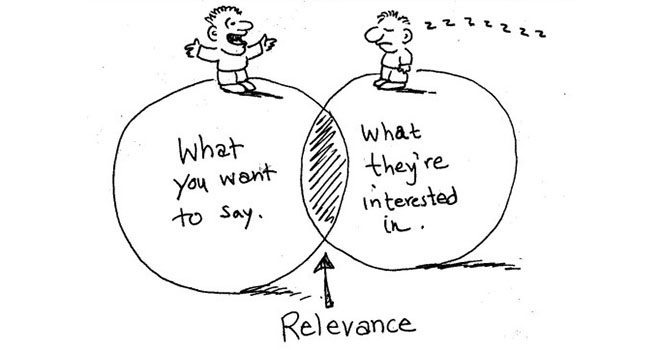
Image Source: Digital Clarity Group
To understand how technical you need to be, consider what your audience might already know and how much is required for them to understand to meet your goal.
If your objective is to acquire funding, for instance, your audience will be more interested in financial benefits than the technical details of your product. The idea is to meet the needs of your audience, not to fuel your passion for engineering.
Configure your IDE
Since you’re delivering a technical presentation, there may be instances where you’ll want to walk your audience through your development environment, code scripts, software demos, or other technical components.
However, you may have adjusted how things look on the screen according to what’s the most convenient for your usual workflow. And what’s good for working in your day-to-day routine may not render well as you go full screen in presentation mode.
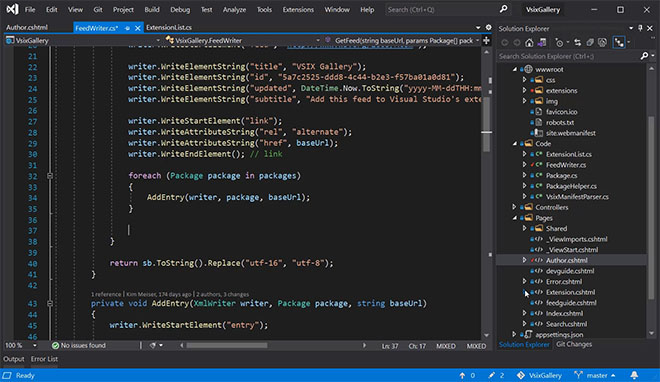
If the attendees can’t decipher what’s on the screen, they’ll get confused and will find it hard to focus on your talk. So it’s important that you customize whatever you’re going to show in your presentation such that it’s easily readable and viewable.
There are several steps you can take to make this happen. First of all, don’t use dark backgrounds. Light-colored backgrounds are easy on the eyes. Second, adjust your font styles and sizes to make sure they’re big enough.
And finally, learn to zoom in on specific areas as required, depending on whether you’re using a Windows PC or a Mac system .
Practice Presentation Skills
Improve your public speaking and presentation skills by practicing them in realistic environments, with automated feedback on performance. Learn More
Minimize distractions
Nothing is more annoying than to keep getting disruptive notifications or popups from in the middle of your presentation. These can be from your operating system (Windows or Mac), or apps such as Slack, Email, Twitter, and more.
At times, these notifications can be personal, embarrassing, or contain confidential information that you don’t want your audience to see.
Therefore, it’s best to make sure in advance that there are no unpleasant surprises. Before you get up to give your presentation, turning off your notifications can go a long way.
This will also reduce the number of processes running on your machine and free up available resources. As a result, the resource-intensive programs that are part of your presentation will run a lot smoother. Here’s how to turn off notifications for Windows , Google Chrome , and Mac .
Get the right equipment
If you want to be a master presenter, you should have the proper tools for the job. The basics include a desktop or laptop machine with good configuration, a big display screen, presentation software (usually MS Powerpoint or Keynote), and a clicker/pointer device.
A clicking device, like the Logitech Wireless Presenter , can help you switch slides from wherever you are in the room, point to a specific part of a slide, and add an overall professional touch to your presentation.
In addition, you should have any cables (HDMI, VGA, USD, etc) and adapters required to connect the devices you are going to use for the presentation.
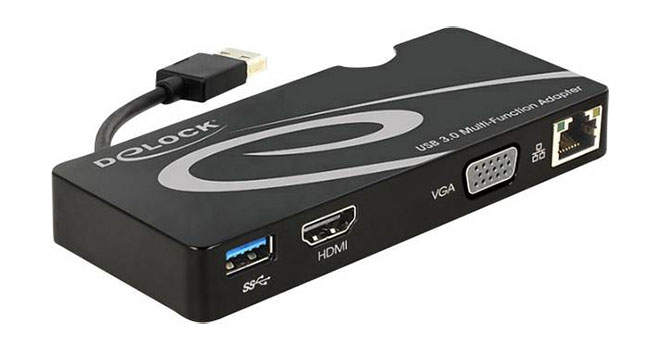
Conrad Delock USB 3.0 Network adapter
If you have no idea about what will be available at your presentation venue, then carry one piece of each of the commonly used cables and adapters. You’ll thank us later.
Rehearse in advance
Practice your slides and your demo multiple times before the presentation, even if you have presented the exact same thing in the past. Do not make any assumptions about your actual presentation environment based on your practice environment.
Technologies and situations change, and you may find things that catch you off guard. Run through everything at least once the night before just to be sure.
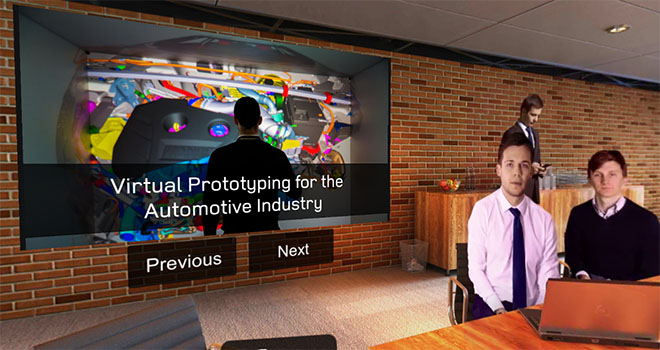
Practice your presentations with interactive exercises .
Even better if you can record yourself during these rehearsal presentations and watch the recordings later to find areas of improvement.
Also, if you’re relying on downloading or doing something in front of the audience that may require a high-speed internet connection, don’t assume you’ll have access to such a network during your presentation. Download and install whatever you need ahead of time.
Finally, enjoy the experience
You’re giving a technical presentation, but that doesn’t mean it has to be boring, or that you have to be serious all the time as you talk.
It’s okay to have fun, crack some jokes, tell a story , ask a rhetorical question or invite participation from the audience when presenting. In fact, a study showed that presentations that don’t let the audience participate see a drop of 14% in engagement.
Don’t worry too much about things going wrong. See every presentation as a dialogue with your attendees and an opportunity to learn and be a better presenter. If you are enjoying yourself, so will your audience.
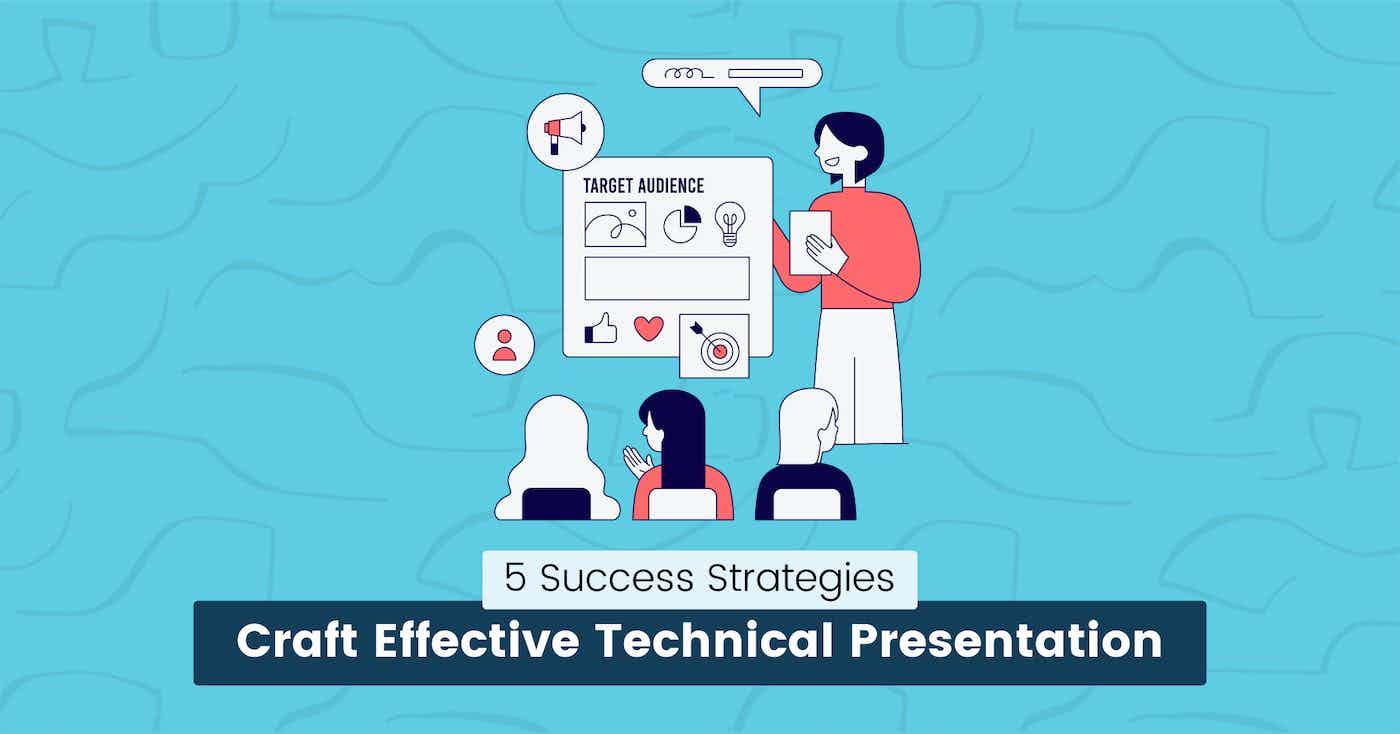
Craft Effective Technical Presentations: 5 Success Strategies
Dominik Sumer
Aug 30, 2023 · 8 min read
Technical presentations can be tricky to execute. You know your subject inside out, but is that enough?
How do you ensure your audience stays engaged throughout the presentation, and how do you answer their questions effectively?
This blog post provides modern strategies for crafting effective technical presentations, covering all aspects, from understanding your audience to handling questions and feedback.
You will also learn about the practical parts of technical presentations, including proper tools and examples.
These tips will help you deliver a successful presentation that makes a lasting impact on your audience.
Anyone can use this guide as a checklist , but the following can get huge benefits:
- Software Engineers or Developers
- Tech YouTubers
- Candidates who are presenting in tech interviews
- Social Media Influences like tech on LinkedIn
- Students, Tech Teachers, and much more.
Identify your Audience:

In our previous guide about technical writing , we shared 19 expert tips you should know.
Let me quickly highlight the five most important tips:
- Understand Audience
- Define Purpose
- Always do your research
- Organize thoughts
- Avoid Jargon and Acronyms
Understanding your audience is not a first step but why?
Because first, you need to identify WHO is your target audience.
Question it by yourself, and write down the three closest audiences like:
- JavaScript Developers: Those who want to learn about JavaScript technologies. You can help them learn the tech faster by sharing beautiful code snippets .
- SaaS Owners: Those tech founders who want to learn about the ongoing development progress of their software. Give them tips on how to tackle obstacles in software development by using technical presentation slides .
- Tech Talks: Those interested in code screencasts within the video content like YouTube or TED Talks. You can use rich animated content, like videos created with snappify.
So, identify your audience first and use the smart tools to simplify things for you and the audience.
Use Smart Tools:
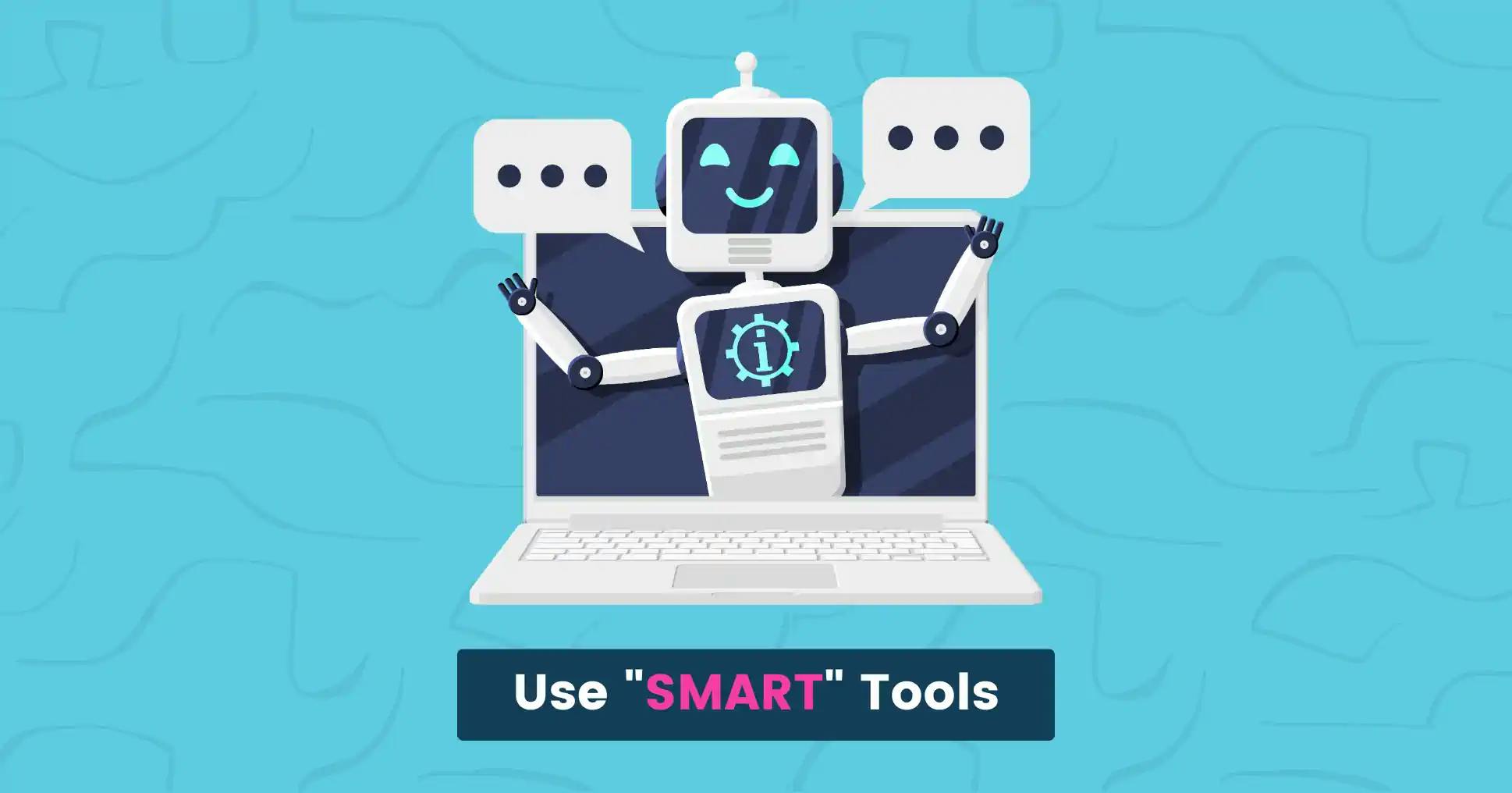
So, what are smart tools in the digital world?
Smart Tools are intelligent software applications that help users perform complex tasks more efficiently and effectively.
They simplify processes, improve productivity, and help achieve goals quickly and easily online.
You can learn about our curated list of technical writing tools , which comes with Artificial Intelligence.
Before using your tool for technical presentations, make sure to check these features first:
- Can you create a fully animated slide?
- Is there any feature for Video Export?
- The tool must be user-friendly to avoid presentation disruptions.
- Clear and visually appealing infographics are important for tools with graphs, diagrams, or slides.
Now that you know enough about the features, here is another list of modern tools to help you become a good presenter.
- Snappify: It can help you present code beautifully and has all the features I have mentioned above. It also has pre-made templates to help you create and share snippets faster.
- PowerPoint: A user-friendly software for creating dynamic presentations with text, images, charts, and multimedia elements.
- Google Slides: A web based presentation tool that lets users create basic presentations and save them online.
Let's take a closer look at the Slides and Video Export features of snappify and how it can become your new companion for your technical presentations.
It comes with a Present button at the top of the bar, which can help you show your code snippets in the presentation mode.
In slides, there are several options for animations:
Besides showing your presentation, you can download all slides or export videos to share on social media.
You can follow this tutorial on creating code presentations with snappify .
Video Export : TypeWriter Example
Video showcasing the TypeWriter transition
Structure Your Presentation
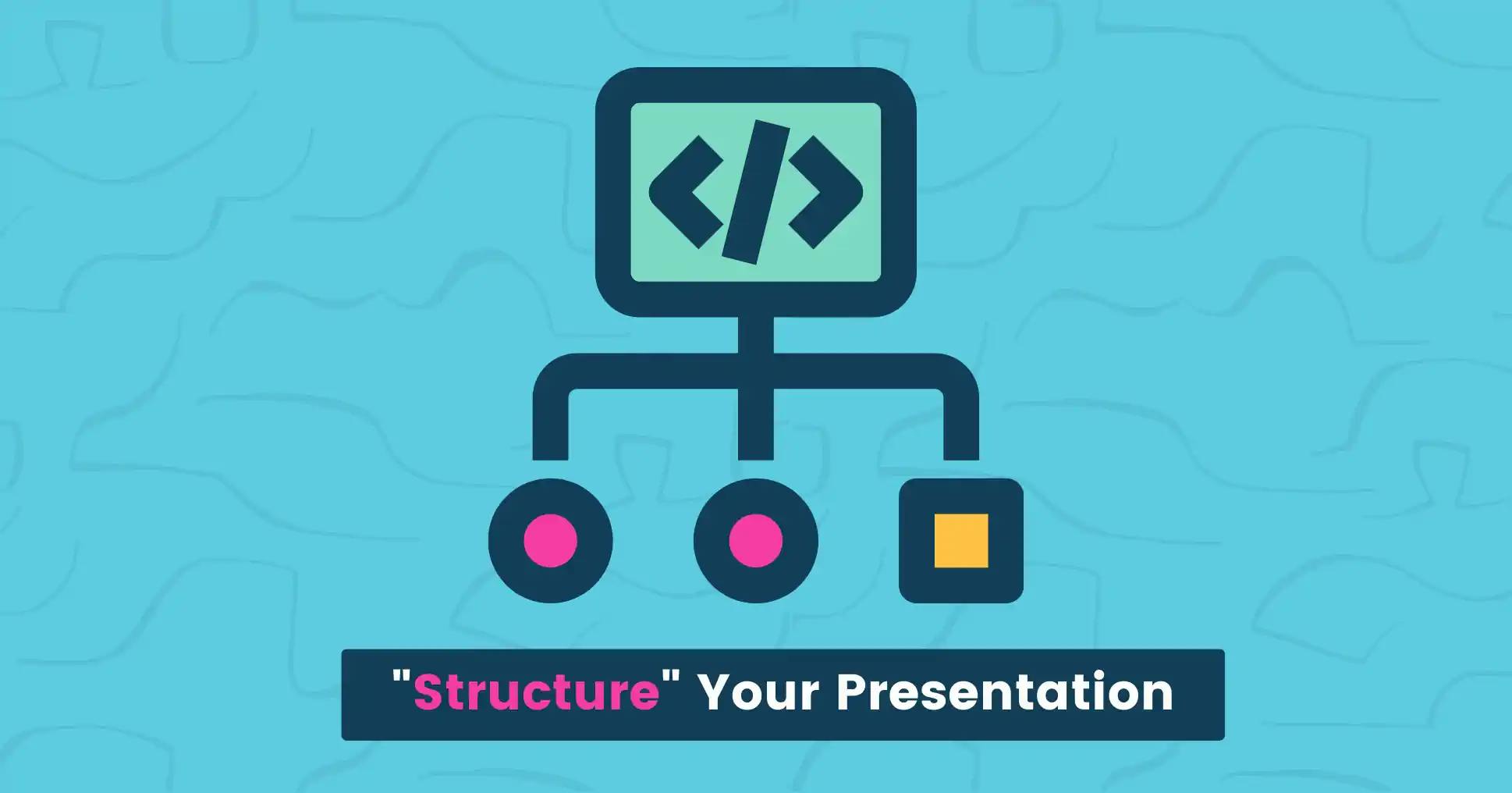
To craft an effective technical presentation, it is crucial to structure your content in a clear and logical flow .
Begin with an attention-grabbing introduction that captivates your audience and sets the tone for the presentation.
Organize your content into sections or chapters, making it easier for your audience to comprehend and follow along.
- Divide your presentation into key sections or points.
- Each section should have a clear focus and contribute to your main message.
- Use bullet points and concise text to support each point.
- Transition smoothly between sections to maintain a logical flow.
- Include visuals such as images, charts, graphs, animations , and videos to enhance understanding and engagement.
- Share real-life examples or case studies that illustrate your points.
- Use relevant data and statistics to back up your points and add credibility.
Finally, remember to summarize key points and provide a memorable conclusion to leave a lasting impact.
Create your next presentation
snappify will help you to create stunning presentations and videos.
This video was created using snappify 🤩
Choose a good Font and Color for the Slides
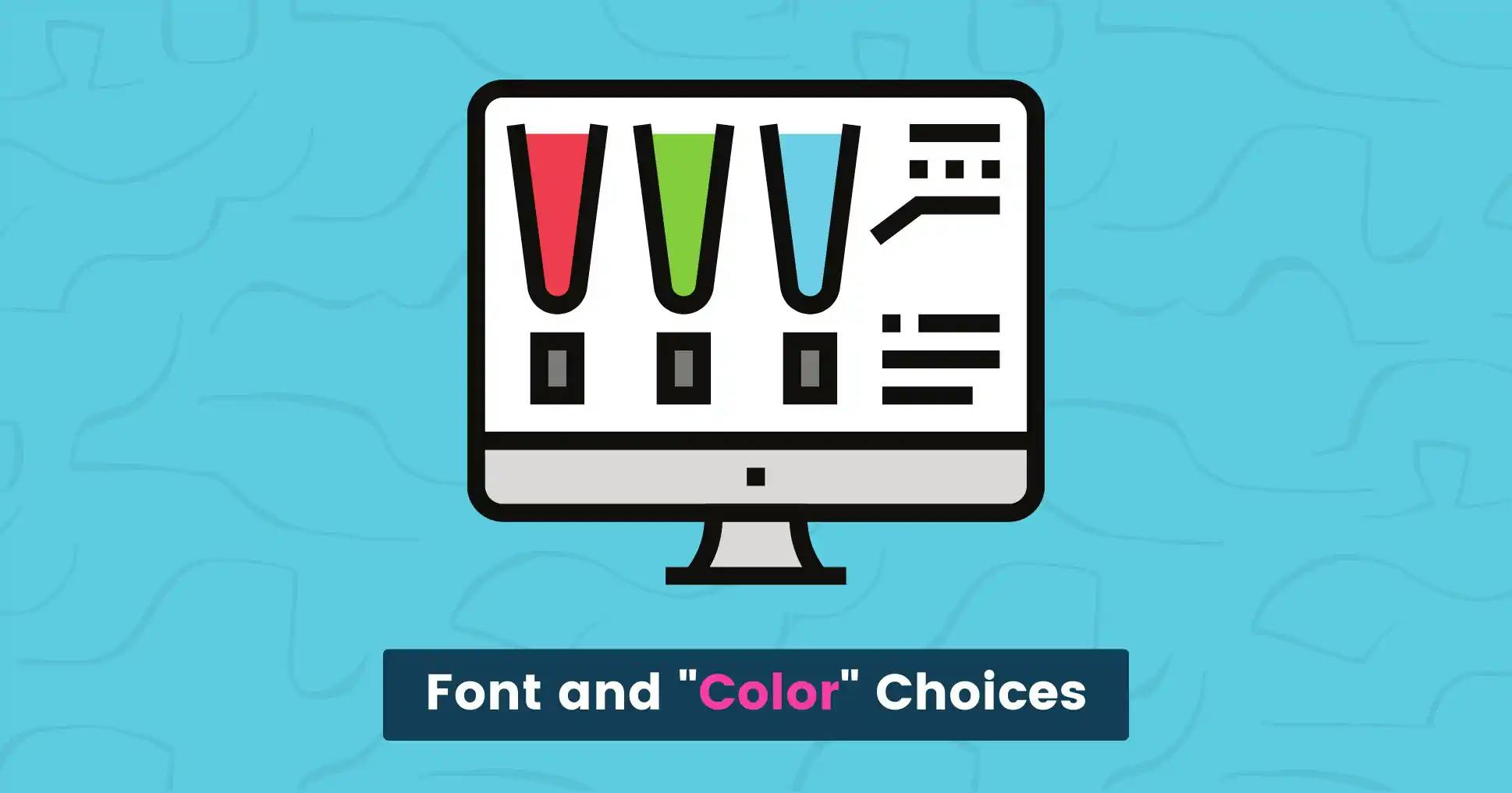
Font and color choices in slides play a key role in shaping the impact and effectiveness of your presentation.
These choices go beyond aesthetics; they influence how your content is perceived, understood, and remembered.
Here are quick tips to make effective font and color choices:
- Readability: Use simple, easy-to-read fonts that can be seen from far away. Avoid fancy or complex fonts that can make reading difficult.
- Consistency: For a professional look, limit your presentation to two font styles: headings and body text.
- Contrast: Use contrasting fonts for headings and body text for better readability. Headings should be in bold or larger font, while body text should be in regular font.
- Hierarchy: Establish hierarchy with color by using bold or contrasting hues for headings and more subdued tones for body text.
- Limit Bright Colors: While bright colors can add visual interest, avoid using too many as they can be distracting and make your presentation look unprofessional.
Remember that your font and color choices should support your technical content and help convey your message effectively.
Test your chosen fonts and colors on different screens to ensure they appear as intended.
Consistency in font and color usage contributes to a polished and visually appealing presentation.
Also take a look at our handcrafted templates to get started with your technical presentations.
Engage with Stories
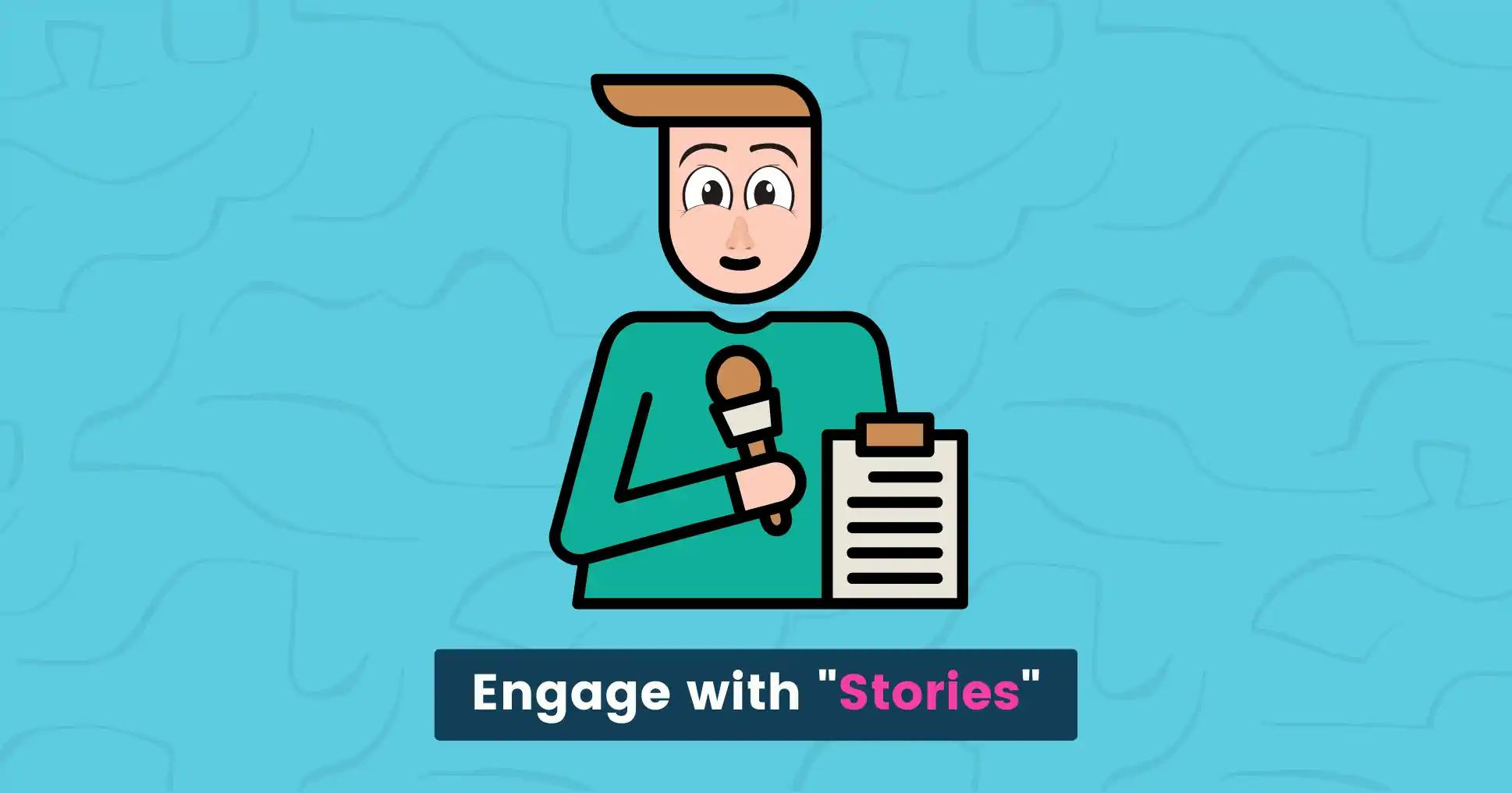
People remember stories better than facts alone.
Include relatable case studies to illustrate your points and make your presentation more relatable.
Storytelling is a powerful technique that can elevate your technical presentation from informative to captivating.
Humans have been using stories to communicate and connect for centuries, and integrating this approach into your presentation can help you create a deeper and more lasting impact on your audience.
Here's how you can effectively use storytelling to engage your audience during your technical presentation:
Quick Story Example:
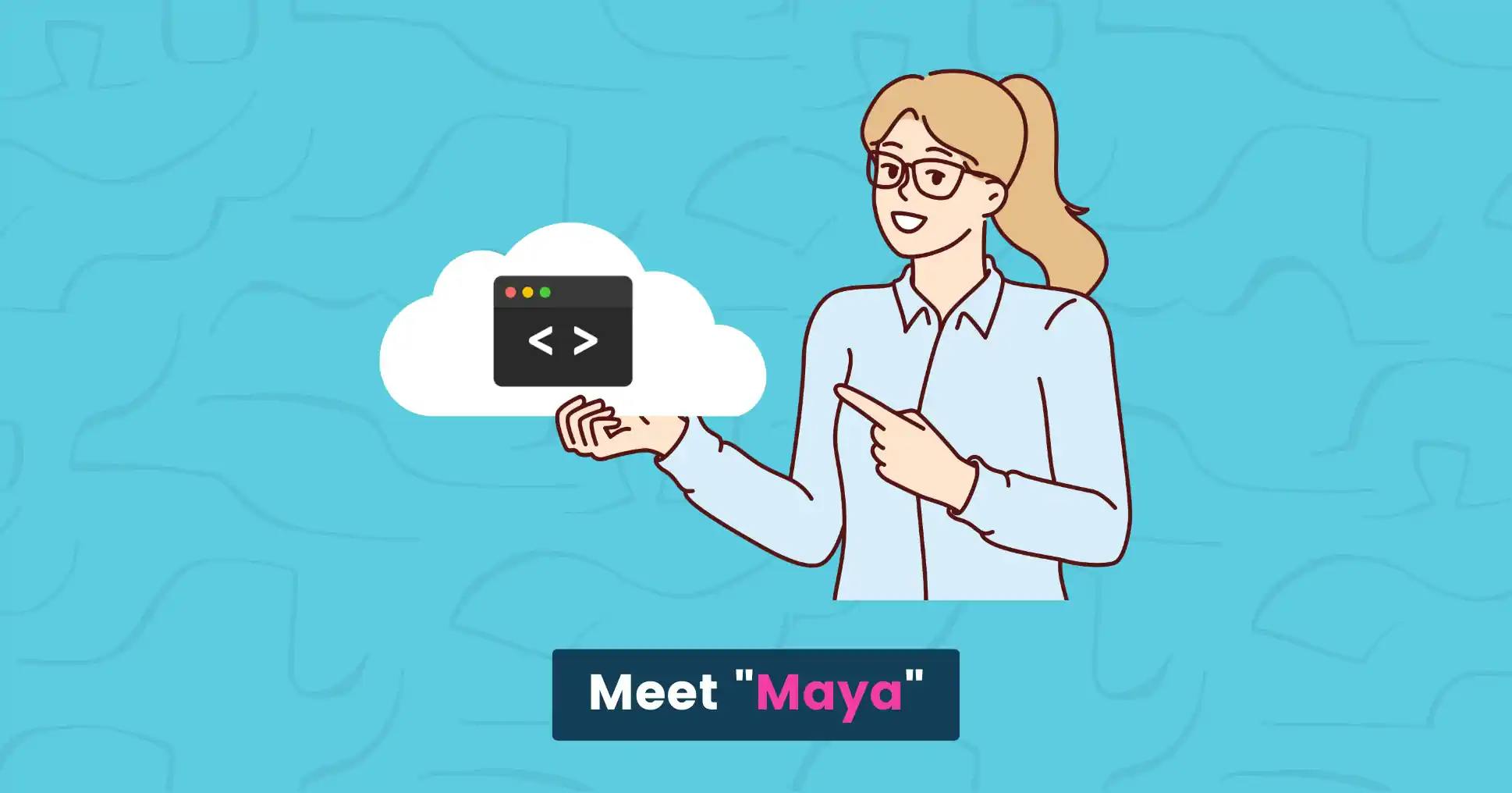
Meet Maya, a talented developer on a mission to make her technical presentations truly captivating.
One day, she discovered snappify, a tool rumored to bring code snippets to life .
Maya decided to give it a shot.
With snappify, Maya's code snippets transformed into dynamic visuals that got animated smoothly across the screen.
During her presentation, she used it to break down complex algorithms step by step.
The audience was captivated, effortlessly following along as the code was visually displayed.
Impressed by Maya's presentation, fellow developers asked about snappify.
Maya shared how the tool had elevated her delivery, making code accessible to all.
Afterward, snappify was known for its captivating technical demonstrations.
Developers worldwide used it to transform complex code into interesting visuals, captivating audiences and enhancing code comprehension.
Now, turn your boring code into fancy and beautiful snippets before sharing it on social media or inside your technical presentation.
In conclusion, delivering a successful technical presentation requires technical skills, engaging visuals, and audience interaction.
A compelling story and utilizing effective visuals are crucial for delivering a memorable and impactful presentation.
Following the tips in this comprehensive guide, you can always deliver successful technical presentations for interviews, YouTube videos, tech talks, social media posts, and much more.
How can I adjust my technical presentation to different levels of expertise among the audience?
Adjust technical depth and terminology based on audience familiarity. Provide real-world examples for beginners and deeper insights for experts.
What is the difference between presentation and technical presentation?
Presentations can be either general or technical. General presentations inform or persuade, while technical presentations explain complex concepts to an audience with relevant expertise like engineering, coding, or more.
How do I overcome nervousness before a technical presentation?
Practice is key. Familiarity with your content and great rehearsal can help reduce anxiety during the presentation.
What is most important in technical presentation?
Effectively convey complex concepts with clear explanations, visuals, and relevance to the audience's needs and expertise - that's clarity.
What are the four essential components of a technical presentation?
A technical presentation has four parts: intro, content, conclusion, and Q&A. Introduce, present, summarize, and impress.
How do you engage your audience during a technical presentation?
To keep your audience engaged during a technical presentation, use relatable examples, break down complex information, and include interactive elements like polls or Q&A sessions. Personal stories can also make it more interesting.
Share Article
How to give a technical presentation (how to give a scientific talk)
By michael ernst, january, 2005 last updated: march 21, 2022, introduction, the content, answering questions, in-class presentations, practice talks, other resources.
(Also see my advice on giving a job talk and on making a technical poster .)
A successful career depends on the ability to give effective technical presentations, whether at a conference, to your research group, or as an invited speaker. This page notes some problems that I very frequently see in talks.
Get feedback by giving multiple practice talks ! One of the most effective ways to improve your work is to see the reactions of others and get their ideas and advice.
Think about the presentations you attend (or have attended in the past), especially if they are similar in some way to yours. What was boring about the other presentations? What was interesting about them? What did you take away from the presentation? What could you have told someone about the topic, 30 minutes after the end of the presentation?
Before you start preparing a talk, you need to know your goal and know your audience. You will have to customize your presentation to its purpose. Even if you have previously created a talk for another venue, you often need to make a new one, particularly if the audience differs or you have done more work in the meanwhile.
The goal of a talk you give to your research group is to get feedback to help you improve your research and your understanding of it, so you should plan for a very interactive style, with lots of questions throughout. In a conference talk , questions during the talk are unlikely, and you have much less time; your chief goal is to get people to read the paper or ask questions afterward. In a seminar or invited talk , you want to encourage questions, you have more time, and you should plan to give more of the big picture.
The goal of a talk is similar to the goal of a technical paper : to change the audience's behavior. Therefore, you should also read and follow my advice about writing a technical paper . Decide what the change is, and focus your talk around that. Typically, you have done some research, and to effect the change you need to convince the audience of 3 things: the problem is worthwhile (it is a real problem, and a solution would be useful), the problem is hard (not already solved, and there are not other ways to achieve equally good results), and that you have solved it. If any of these three pieces is missing, your talk is much less likely to be a success. So be sure to provide motivation for your work, provide background about the problem, and supply sufficient technical details and experimental results.
When you give a talk, ask yourself, “What are the key points that my audience should take away from the talk?” Then, elide everything that does not support those points. If you try to say too much (a tempting mistake), then your main points won't strike home and you will have wasted everyone's time. In particular, do not try to include all the details from a technical paper that describes your work; different levels of detail and a different presentation style are appropriate for each. Never paste PDF of a table from a paper to slides. Reformat the table to be more readable and to remove information that is not essential. The talk audience does not have as much time to comprehend the details as a paper reader does.
Before you create slides, a good way to determine what your talk should say is to explain your ideas verbally to someone who does not already understand them. (You may use a blank whiteboard, but that often is not necessary.) You may need to do this a few times before you find the most effective way to present your material. Notice what points you made and in what order, and organize the talk around that. Slides should not be an obstacle that constrains your talk, but they should support the talk you want to give.
Do not try to fit too much material in a talk. About one slide per minute is a good pace (if lots of your slides are animations that take only moments to present, you may have more slides). Remember what your key points are, and focus on those. The key point should be written on the slide, for example as its title or as a callout. Don't present more information than your audience can grasp; for example, often intuitions and an explanation of the approach are more valuable than the gory details of a proof. If you try to fit the entire technical content of a paper into a talk, you will rush and the audience may come away understanding nothing. It's better to think of the talk as an advertisement for the paper that gives the key ideas, intuitions, and results, and that makes the audience eager to read your paper or to talk with you to learn more. That does not mean holding back important details — merely omitting less important ones. You may also find yourself omitting entire portions of the research that do not directly contribute to the main point you are trying to make in your talk.
Just as there should be no extra slides, there should be no missing slides. As a rule, you shouldn't speak for more than a minute or so without having new information appear. If you have an important point to make, then have a slide to support it. (Very few people can mesmerize an audience on a technical topic, and leave the audience with a deep understanding of the key points, without any visual props. Unfortunately, you are probably not one of them.) As a particularly egregious example, do not discuss a user interface without presenting a picture of it — perhaps multiple ones. As another example, you should not dwell on the title slide for very long, but should present a graphic relevant to the problem you are solving, to make the motivation for your work concrete.
Slide titles. Use descriptive slide titles. Do not use the same title on multiple slides (except perhaps when the slides constitute an animation or build). Choose a descriptive title that helps the audience to appreciate what the specific contribution of this slide is. If you can't figure that out, then you do not yet understand your own material.
Introduction. Start your talk with motivation and examples — and have lots of motivation and examples throughout. For the very beginning of your talk, you need to convince the audience that this talk is worth paying attention to: it is solving an important and comprehensible problem. Your first slide after the title slide should be motivation, such as an example of the problem you are solving.
Outline slides. Never start your talk with an outline slide. (That's boring, and it's too early for the audience to understand the talk structure yet.) Outline slides can be useful, especially in a talk that runs longer than 30 minutes, because they help the audience to regain its bearings and to keep in mind your argument structure. Present an outline slide (with the current section indicated via color, font, and/or an arrow) at the beginning of each major section of the talk, except for the introductory, motivational section.
Conclusion. The last slide should be a contributions or conclusions slide, reminding the audience of the take-home message of the talk. Do not end the talk with future work, or with a slide that says “questions” or “thank you” or “the end” or merely gives your email address. And, leave your contributions slide up after you finish the talk (while you are answering questions). One way to think about this rule is: What do you want to be the last thing that the audience sees (or that it sees while you field questions)?
Builds/animations. When a subsequent slide adds material to a previous one (or in some other way just slightly changes the previous slide), all common elements must remain in exactly the same position, pixel-for-pixel. A good way to check this is to quickly transition back and forth between the two slides several times. If you see any jitter, then correct the slide layout to remove it. You may need to leave extra space on an early slide to accommodate text or figures to be inserted later; even though that space may look a little unnatural, it is better than the alternative. If there is any jitter, the audience will know that something is different, but will be uneasy about exactly what has changed (the human eye is good at detecting the change but only good at localizing changes when those changes are small and the changes are smooth). You want the audience to have confidence that most parts of the slide have not changed, and the only effective way to do that is not to change those parts whatsoever. You should also consider emphasizing (say, with color or highlighting) what has been added on each slide.
Keep slides uncluttered. Don't put too much text (or other material) on a slide. When a new slide goes up, the audience will turn its attention to comprehending that slide. If the audience has to read a lot of text, they will tune you out, probably missing something important. This is one reason the diagrams must be simple and clear, and the text must be telegraphic. As a rule of thumb, 3 lines of text for a bullet point is always too much, and 2 full lines is usually too much. Shorten the text, or break it into pieces (say, subbullet points) so that the audience can skim it without having to ignore you for too long.
Do not read your slides word-for-word. Reading your slides verbatim is very boring and will cause the audience to tune out. You are also guaranteed to go too fast for some audience members and too slow for others, compared to their natural reading speed, thus irritating many people. If you find yourself reading your slides, then there is probably too much text on your slides. The slides should be an outline, not a transcript. That is, your slides should give just the main points, and you can supply more detail verbally. It's fine to use the slides as a crutch to help you remember all the main points and the order in which you want to present them. However, if you need prompting to remember the extra details, then you do not have sufficient command of your material and you need to practice more before giving your talk.
Just as you should not read text verbatim, you should not read diagrams verbatim. When discussing the architecture of a system, don't just read the names of the components or give low-level details about the interfaces between them. Rather, explain whatever is important, interesting, or novel about your decomposition; or discuss how the parts work together to achieve some goal that clients of the system care about; or use other techniques to give high-level understanding of the system rather than merely presenting a mass of low-level details.
(It's possible to overdo the practice of limiting what information appears on each slide, and you do want to have enough material to support you if there are questions or to show that the simplified model you presented verbally is an accurate generalization. But the mistake of including too much information is far more common.)
Text. Keep fonts large and easy to read from the back of the room. If something isn't important enough for your audience to be able to read, then it probably does not belong on your slides.
Use a sans-serif font for your slides. (Serifed fonts are best for reading on paper, but sans-serif fonts are easier to read on a screen.) PowerPoint's “Courier New” font is very light (its strokes are very thin). If you use it, always make it bold, then use color or underlining for emphasis where necessary.
Figures. Make effective use of figures. Avoid a presentation that is just text. Such a presentation misses important opportunities to convey information. It is also is wearying to the audience.
Images and visualizations are extremely helpful to your audience. Include diagrams to show how your system works or is put together. Never include generic images, such as clip art, that don't relate directly to your talk. For example, if you have a slide about security, don't use the image of a padlock. As another example, when describing the problem your work solves, don't use an image of a person sitting at a computer looking frustrated. Just as good pictures and text are better than text alone, text alone is better than text plus bad pictures.
When you include a diagram on a slide, ensure that its background is the same color as that of the slide. For example, if your slides have a black background, then do not paste in a diagram with a white background, which is visually distracting, hard to read, and unattractive. You should invert the diagram so it matches the slide (which may require redrawing the diagram), or invert the slide background (e.g., use a white slide background) to match the diagrams. A light-colored background with dark text is usually the best choice (preferably white background with black text; see the next paragraph about eye candy).
Do not use eye candy such as transition effects, design elements that appear on every slide, or multi-color backgrounds. At best, you will distract the audience from the technical material that you are presenting. At worst, you will alienate the audience by giving them the impression that you are more interested in graphical glitz than in content. Your slides can be attractive and compelling without being fancy. Make sure that each element on the slides contributes to your message; if it does not, then remove it.
Emphasis. Slides that are monocolor black on a white background can be boring. This tires the audience, and it may prevent them from appreciating the big picture. Use color, callouts (e.g., arrows or speech bubbles), or other mechanisms to draw attention to the most important parts of your slides or graphs. For example, suppose you have a list of 3-5 bullet points, each one line of text long. You might want to emphasize the 1-3 most important words in each bullet point.
Color. About 5% of American males are color-blind, so augment color with other emphasis where possible. For example, on an outline slide, in addition to color I use boldface and also a right arrow (⇒) in the left margin to indicate the current section of the talk.
The presentation
Make eye contact with the audience. This draws them in. It also helps you determine when they are confused or have lost interest, and whether your pacing is too fast or too slow.
Stand and face the audience.
- Don't give a talk while seated. Standing gives you more energy, the talk is more dynamic, and it is easier to maintain eye contact.
- Do not face the screen, which puts your back to the audience. This is offputting, prevents you from getting feedback from the audience's body language, and can cause difficulty in hearing/understanding you. Do not look down at your computer, either, which shares many of the same problems.
- Don't stand in front of the screen. This prevents the audience from viewing your slides.
- Being animated is good, but do not pace. Pacing is very distracting, and it gives the impression that you are unprofessional or nervous.
When giving a presentation, never point at your laptop screen, which the audience cannot see. Amazingly, I have seen many people do this! Using a laser pointer is fine, but the laser pointer tends to shake, especially if you are nervous, and can be distracting. I prefer to use my hand, because the talk is more dynamic if I stride to the screen and use my whole arm; the pointing is also harder for the audience to miss. You must touch the screen physically, or come within an inch of it. If you do not touch the screen, most people will just look at the shadow of your finger, which will not be the part of the slide that you are trying to indicate.
If you find yourself suffering a nervous tic, such as saying “um” in the middle of every sentence, then practice more, including in front of audiences whom you do not know well.
If you get flustered, don't panic. One approach is to stop and regroup; taking a drink of water is a good way to cover this, so you should have water on hand even if you don't suffer from dry throat. Another approach is to just skip over that material; the audience is unlikely to know that you skipped something.
Think about your goal in giving the talk. When presenting to your own research group, be sure to leave lots of time for discussion and feedback at the end, and to present the material in a way that invites interaction after and perhaps during the talk. (When presenting to your own group, you can perhaps give a bit less introductory material, though it's hard to go wrong with intro material. It should go quickly for that audience; you ensure that everyone is using terms the same way; and it's always good to practice presenting the motivation, context, background, and big ideas.)
For computer science conferences, the typical dress code is “business casual”. (For men, this is a dress shirt with slacks or jeans.) Some people dress more formally, some more casually. The most important thing is that you are comfortable with your clothing; if you are not, your discomfort will lead to a worse presentation.
Answering questions from the audience is very hard! Even after you become very proficient at giving a talk, it will probably take you quite a bit longer to become good at answering questions. So, don't feel bad if that part does not go perfectly, but do work on improving it.
Just as you practice your talk, practice answering questions — both the ones that you can predict, and also unpredictable ones. Give practice talks to people who are willing to ask such questions.
When an audience member asks a question, it is a good idea to repeat the question, asking the questioner whether you have understood it, before answering the question. This has three benefits.
- You ensure that you have understood the question. When thinking under pressure, it can be far too easy to jump to conclusions, and it is bad to answer a question different than the one that was asked. A related benefit is that you get to frame the question in your own words or from your own viewpoint.
- You give yourself a few moments to think about your answer.
- If the audience member does not have a microphone, the rest of the audience may not have been able to hear the question clearly.
Be willing to answer a question with “no” or “I don't know”. You will get into more trouble if you blather on or you make up an answer on the fly.
For an in-class presentation by a student, you will be judged on how well other people understand the material at the end of the class, not on how well you understand the material at the beginning of the class. (You do need to understand the material, but that is not the main point.)
When you present someone else's paper in class, you should cover not only the technical details (people generally do a good job of this), but also what is novel and why others didn't do it before. That is just as important but very often overlooked. Focus on what is important about the paper, not just on what is easy to explain or to give an example for.
Know what your main point is, and don't get bogged down in easier-to-understand but less interesting details. Try not to bring up a topic until you are ready to discuss it in detail — don't bring it up multiple times.
Encourage questions — it's the best way to deepen understanding — and be able to answer them. If other students wrote questions in a reading summary, be responsive to them. When you ask a question, don't assume the answer in the form of your question. For example, don't ask, “Was there anything novel in the paper, or not?” but “What was novel in the paper?” It can be very effective to ask a question that reveals understanding of a subtle or easy-to-misunderstand point (but an important one!) in the paper, because this will lead the audience members to reflect both on the paper and on the way they read and understood it. Don't be too abstruse, and don't get bogged down in unimportant details just to show your mastery of them.
Examples are often very helpful. Augment your talking with visuals on the board or slides. Either is fine. The board may encourage more interaction (and it slows you down in a beneficial way), but does require pre-planning; don't just go up and start drawing. Most people find comfort in having pre-prepared slides, and slides can be a good choice because they can be more legible and detailed, can include animations, etc. Don't waste a huge amount of time on elaborate slide decks, though; that is not the point.
Always give at least one practice talk before you present in front of an audience. Even if you have read over your slides and think you know how the talk will go, when you speak out loud your ideas are likely to come out in a different way. (This is true about writing , too: even if you know what you want to say, it takes several revisions to figure out the best way to say it.) In fact, you should practice the talk to yourself — speaking out loud in front of a mirror, for example — before you give your first practice talk. In your individual practice session, you must say every word you intend to in the actual talk, not skipping over any parts.
It can be a good idea to keep your practice talk audience relatively small — certainly fewer than 10 people. In a large group, many people won't bother to speak up. If the pool of potential attendees is larger than 10, you can give multiple practice talks, since the best feedback is given by someone who has not seen the talk (or even the material) before. Giving multiple practice talks is essential for high-profile talks such as conference talks and interview talks. Avoid a small audience of people you don't trust, who might be unanimous in a wrong opinion; getting a balance of opinions will help you avoid making too many mistakes in any one direction.
Videotape yourself to see how you come across to others. This information can be a bit traumatic, but it is invaluable in helping you to improve.
When giving a practice talk, number your slides (say, in the corner), even if you don't intend to include slide numbers in your final presentation.
When giving a practice talk, it is very helpful to distribute hardcopy slides (remember to include slide numbers) so that others can easily annotate them and return them to you at the end of the talk. (Also, the audience will spend less time trying to describe what slide their comment applies to, and more time writing the comment and paying attention to you.) For non-practice talks, don't give out hardcopy slides, as they would tempt the audience to pay attention to the piece of paper instead of to you.
Go to other people's practice talks. This is good citizenship, and cultivating these obligations is a good way to ensure that you have an audience at your practice talk. Furthermore, attending others' talks can teach you a lot about good and bad talks — both from observing the speaker and thinking about how the talk can be better (or is already excellent), and from comparing the feedback of audience members to your own opinions and observations. This does not just apply to practice talks: you should continually perform such introspective self-assessment.
(Also see Tessa Lau 's advice on giving a practice talk — which focuses on a practice talk for a PhD qualifying exam, but is relevant to talks in general.)
Here are some other good resources for speakers who wish to give a good talk.
See Ian Parberry's speaker's guide .
The LaTeX Beamer documentation has some good advice.
Back to Advice compiled by Michael Ernst .

- PowerSpeaking ® Get an Expert Foundation
- HighTechSpeaking ® Make Technical Data Come Alive
- Speaking Up: Presenting to Decision Makers ® Win Over Senior Executives
- SalesSpeaking ® Make the Sale
- ConferenceSpeaking™ Prepare for a Speaking Event
- Be Clear, Be Confident, Be Courageous Confident Speaking for Women
- Storytelling Course Tell Stories that Captivate
- Facilitation
- Facilitators
- Management & Staff
- Board Members
- Learning Hub
- PowerSpeaking Live!
Presentations
Communication, facilitation, powerspeaking blog: tips and strategies for crafting presentations, deliver more powerful technical presentations: 8 techniques.
by Ralf Wolter Aug 4, 2022 1:36:00 PM

Before moving into training and coaching, I was an IT Consulting Engineer for 25-plus years. To this day, I have a left-brain bent. But I remember the experience that changed my perspective on what makes a powerful technical communicator (hint: it involves both hemispheres).
I was watching a very senior engineer at Cisco give a technical presentation. This engineer was so senior and well-regarded, he held a prestigious Fellow position at the high-tech company.
What struck me was that he was so good at illustrating his points and keeping the audience rapt. I approached him after his talk and asked him, ‘What’s your secret sauce?’ He said, ‘Whenever I give a technical talk, I start by explaining in a way that my mum would understand it.’
I really liked the way he dove into deep technical detail only after he introduced the concepts with brief, compelling stories and vivid analogies. To me, that was a perfect way to make sure everyone understands what you’re talking about, without dumbing down the content.
What I’ve learned since then is that this kind of approach to technical presenting doesn’t take away from the content expert’s credibility; as a matter of fact, it adds to it, especially if they’re addressing a mixed audience.
Delivering clear, complex data in a meaningful way to the people and businesses impacted is more important than ever—at work and in our communities.
To do it well, you might need to rethink some of the hallmark left-brain preconceptions about how to craft and deliver your talk. But trust me, it’s well worth the journey.
Here are our top pointers . . .
1. Start With Your Audience in Mind
Who are you presenting to, and how is your main message or proposal relevant to them? How much detail do they really want or need? Your technical peers might be happy to dive into lots of detailed data. But how about a mixed audience of engineers, salespeople, and potential customers? Or maybe senior executives , who just want the bottom line?
For example, let’s say you’re presenting to a mixed audience. The best strategy would be to organize your presentation so you begin with a big-picture overview and main message/proposal for the non-technical people; then a strategic level of detail for technical managers and technical specialists outside your area; and last, a deep dive for content experts who are familiar with your work.
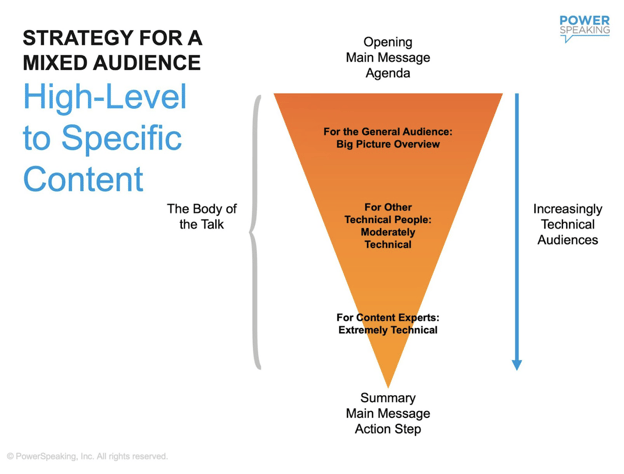
Senior-level executives prefer content focused on the overall impact of your data or proposal: the cost, ROI, and benefits. They want the high-level view, with executive summaries, solutions, and future business implications. (Check out our downloadable PDF, “ How to Present to Executives: 23 Proven Tips ”)
Non-technical audiences and technical people in different disciplines also appreciate higher-level content. In addition, they typically want to know how what you’re presenting will affect them directly. Will it impact their workload or priorities? Will it delay other projects they’re working on? Will it shift roles or responsibilities?
Technical audiences want content rich in detailed data analysis, design specifications, theory, and statistics. They expect you to know the jargon and to use technical terms. They want to know about the research behind your data, and they appreciate information such as algorithms, process-flow diagrams, feature lists, and coding examples.
One presenter we worked with noted that with mixed audiences, he starts by announcing, "Today, I'll be doing a split-level presentation. The first 10 minutes will be a big-picture, market-focused summary. In the next 10 minutes, I will provide an overview of the technology involved. In the last 10 minutes I will go into the detail and present the results of our code review. Feel free to leave before the next level of detail if that is not what you want."
So remember, consider your audience before you get too far in crafting your presentation. By doing so, you will be more . . .
Engaging By directing your presentation to the audience’s needs, you’ll increase attention and retention.
Efficient By creating an audience-centric presentation from the start, you’ll find it easier to plan and deliver a relevant and memorable talk.
Effective By communicating an action the audience can take as a result of the presentation, you’ll have a greater impact (we go into this in “Identify an Action Step,” below).
Here’s a helpful Audience Analysis checklist we developed for workshop participants.
Next, what do you want the audience to do with the data you’re presenting?
2. Identify an Action Step
Once you’ve analyzed your audience, the next best step is to ask yourself, "What do I want the audience to do, think, or feel as a result of hearing this presentation?"
One common mistake many presenters make is to assume the audience understands what they’re being asked to do. Unless your request is clear and concrete, you risk creating confusion and losing their support.
Here are some quick examples of effective vs. ineffective action steps . . .
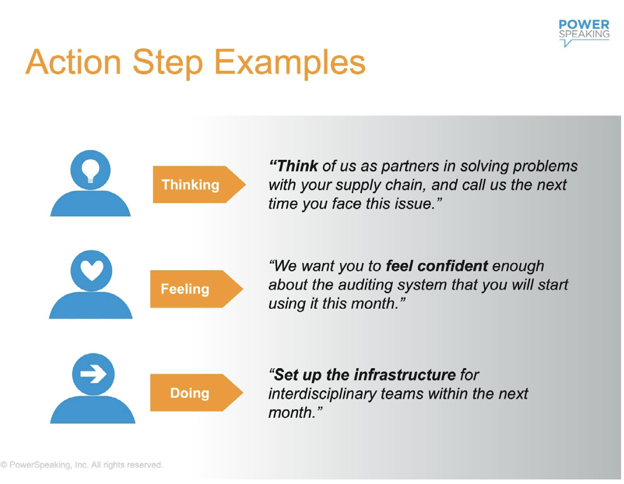
Now it’s time to dive into the core content of your presentation . . .
3. Develop a Clear Main Message
Even if you have complex ideas or data to discuss, your presentation should have a clearly stated central purpose or key message. Why are you presenting the data? What do you want your audience to remember?
A short, clear, and compelling main message accomplishes several important things . . .
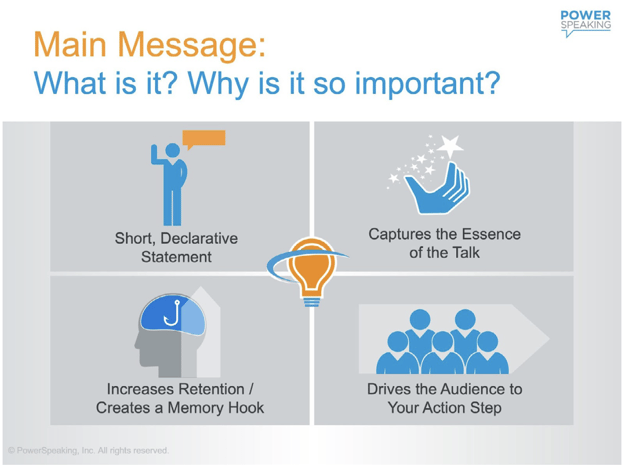
Here are some best practices for developing your main message so it’s clear and memorable . . .
As PowerSpeaking, Inc. Master Facilitator Rita Williams emphasized in the video, repetition of your main message—word for word—is key. Research has shown that people are much more likely to retain your clear, concise main message if you repeat it at least three times throughout your presentation, at the beginning, middle, and end.
Once you’ve analyzed your audience, identified an action step, and crafted your main message, it’s time to turn to the substance of your presentation . . .
4. Make Your Content Relatable and Memorable
Maybe you want to get a group of teams fired up about the next phase of product development. Perhaps you need to enlist support from other departments to make a system change. Or maybe your team needs budget approval from senior management to launch a new project.
No matter your purpose, you’re far more likely to succeed if you help your audience relate to your content and remember (and maybe act on) it after the presentation is over.
We’ve found that the best way to do that is to craft a technical presentation that balances analytical and anecdotal evidence— and connects with people on a human level.
Analytical Evidence: Facts and Figures
Analytical evidence is typically evidence drawn from statistical information—especially data collected by systematic methods. for example, the number of component failures reported in a quarter, the percentage of people who had adverse reactions to a new drug, or the roi on a new service offering over a specified period of time would all be considered analytical data. , anecdotal evidence: stories, analogies, case studies, examples.
Anecdotal evidence tells a story rather than drawing solely on numbers or percentages. Examples: A story about how a seriously ill patient responded to a new drug, reading a letter from a satisfied customer, or talking about an experience you had when calling your own company for customer service.
Some technical people in our workshops bristle at the idea of storytelling or, as they’ll say, “trying to be entertaining.” But being an entertainer isn’t the point here. The point is that we’re all human, and images, metaphors, and stories spark our interest and lodge in our memories more easily than facts and figures alone.
“In fact, the thickness of the Earth's atmosphere, compared with the size of the Earth, is in about the same ratio as the thickness of a coat of shellac on a schoolroom globe is to the diameter of the globe. That's the air that nurtures us and almost all other life on Earth, that protects us from deadly ultraviolet light from the sun, that through the greenhouse effect brings the surface temperature above the freezing point.”
In his book “Actual Minds, Possible Worlds,” psychologist Jerome Bruner estimated that facts are about 22 times more memorable when they are delivered via a story.
When the brain sees or hears a story, it mimics the pattern of the writer’s or speaker's brain. This is known as neural coupling, where in effect, the storyteller literally shares their sensory experience with another person. (A much more memorable experience than looking at a spreadsheet in a slide presentation.)
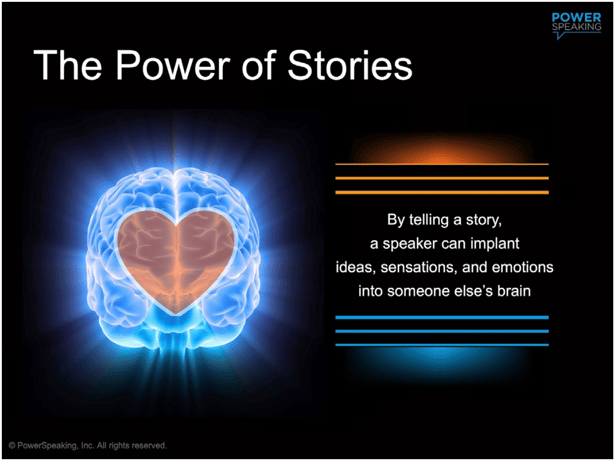
“ You cannot reach a person's head without first touching their heart, and the path to the heart runs through the brain, starting with the amygdala . . . We now know which brain chemicals make us pay attention to a speaker (cortisol) and which make us feel empathy toward another person (oxytocin)." — Carmine Gallo, "Storyteller's Secret.”
“ You can’t play tennis with a bowling ball.”
So, remember that research proves you will increase the impact of your data and your message by reaching people through their hearts and minds .
Next, use the power of imagery to help people understand and remember key points . . .
5. Be Creative With Visual Aids
Whether you’re presenting in person or virtually, there are several ways you can hold people’s interest and drive home your message by getting creative with visuals.
Add Imagery to Explain Data
You already know not to clobber your audience with endless data-dense slides, right? Good. The more you can convey data/key messages via imagery, the more engaging and memorable your content will be.
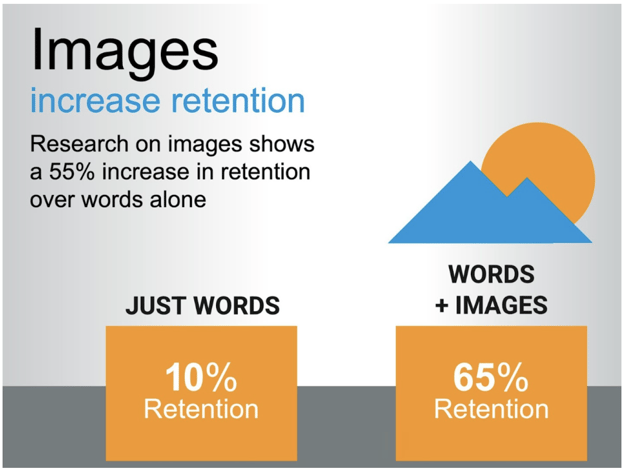
Here are a few more examples of combining simple, powerful images with (few) words to deliver a message . . .
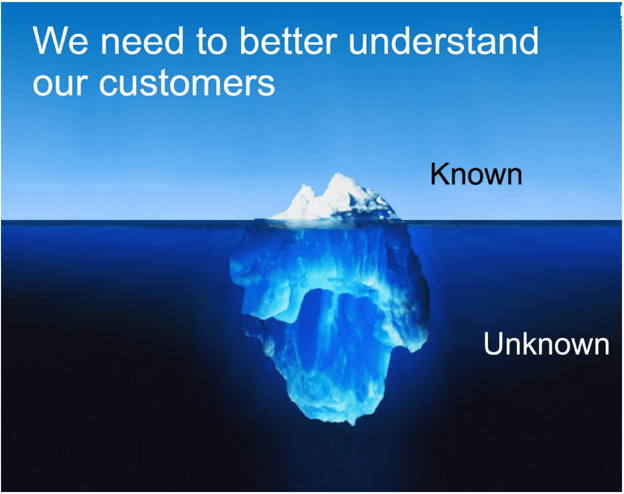
Don’t Limit Yourself to Slides
Think about introducing a variety of visual aids to make your presentation more interesting . . .
Whiteboards : A virtual whiteboard or an in-person flip-chart are still great ways to emphasize key points, capture audience feedback or questions, or explain a concept.
Props: Use props to illustrate a key metaphor or idea from your presentation. A world globe could help illustrate the global marketplace, or an apple could evoke preventive health care (“An apple a day keeps the doctor away.”)
Handouts: A handout allows the audience to take something back to work that can be used as a reference or summary of your content.
Video Clips: These are a great way to break the monotony of still slides, and often introduce a more human factor to the topic.
6. Use Pattern Disruption to Hold Attention
There’s nothing like breaking a pattern to snap people back to attention. Think of a presenter who suddenly turns off the screen or introduces music. Or how about a presenter who’s been talking for five minutes then suddenly . . . stops. Silence, for like 30 seconds. You’d look up, right?
Consider places in your presentation where people might need something fresh to keep them engaged. Some examples . . .
- Stories and analogies
- Video clips or sound recordings
- Style changes (vocal, movement, gestures, pausing)
- Blanking the screen
- Visuals (graphics, illustrations, images)
- Audience participation (small group discussion, brainstorming)
Next, let’s look at one aspect of successful presenting that causes many techies to roll their eyes: an engaging delivery style.
Stay with me. It’s relatively painless . . .
7. Don't Underestimate the Power of Style
A speaker who stands statue-still, stares at their slides or notes, and speaks in a monotone is enough to put anyone to sleep—no matter how interesting the content.
Remember, even scientists, engineers, and system programmers are human. And research has shown that we humans are moved by nonverbal communication. We “read” a lot into its presence or absence, which means it can either obscure or make clear what we’re saying out loud.
“What you do speaks so loudly that I cannot hear what you say." — Ralph Waldo Emerson
If you’re preparing to make a presentation or give a talk, it’s likely you do what most people do: focus solely on your content. While what you have to say is definitely key, how you say it—through nonverbal “language”—is a lot more important than you might think.
Research has shown repeatedly that your posture, gestures, facial expressions, and the tone and cadence of your voice play a huge role not only in getting your message across to an audience, but also, in engaging them, building trust, and increasing your credibility.
Your tone of voice, for example, has a big impact on how your content is received.
Not being able to hear a speaker, either because of poor audio or a too-soft voice, isn’t just an annoyance. In a USC study that looked at the effects of poor audio in scientific presentations, they found that, “When the video was difficult to hear, viewers thought the talk was worse, the speaker less intelligent and less likable, and the research less important.”
Speaking in a dreary monotone is another way to lose your audience. Watch how to avoid it and instead, create energy and interest . . .
source: Great Speech Writing, "How to Avoid Speaking in a Monotone," via YouTube
If you’d like more tips on making nonverbal communication work for you, check out our blog, “ Use the Power of Nonverbal Communication to Connect with Your Audience: 7 Tips .”
8. Bring Your Authentic Self to the Table
Speaking of the human factor when it comes to presentations, know that authenticity, openness, and passion go a long way in engaging your audience, building trust—and yes, even establishing your credibility.
NASA mathematician Katherine Johnson once revealed her childhood passion for numbers in a very simple, relatable way . . .
“I counted everything. I counted the steps to the road, the steps up to church, the number of dishes and silverware I washed ... anything that could be counted, I did.”
Now, if you had been in the audience when she led with that, she’d have your attention, right?
No matter how complex the data or the message, an audience-centric, authentic, human approach is a good place to start.
Join Us in Conversation . . .

Best-Practice Crisis Communication
Thursday, april 18, 2024, 9-10:00 a.m. pt/12-1:00 p.m. et/5-6:00 p.m. bst.

Curtis Kellogg
Strategic communications professional.

Senior Vice President of Global Practice, The Kaleidoscope Group

Nicole Wajer
Technical solutions architect, cisco.

Payal Gandhi Hoon
Master facilitator and coach, powerspeaking, inc..

Karen McDonagh Reynolds
Transformation director & board member, london market joint ventures.

Ralf Wolter
Topics: Effective Technical Presentations
Don’t Miss Out on Insights!
Subscribe to PowerSpeaking Insights to get our blog, best-practice tips, special offers, and more sent directly to your inbox.

Subscribe to PowerSpeaking Insights
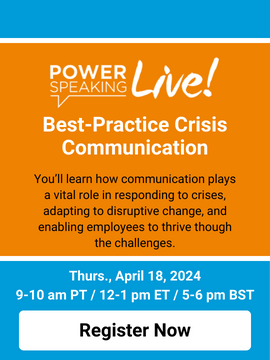
Recent Posts
Popular posts.

Address: 1233 Harrison Avenue Redwood City, CA 94062
Fax: 650-631-8660-->
SUBSCRIBE TO POWERSPEAKING INSIGHTS
Get our blog, best-practice tips, special offers, and more sent directly to your inbox.
Copyright 2024 © PowerSpeaking, Inc. All rights reserved.
- Privacy Policy
- Cookie Policy

Technical Presentation
Structure diagram, criteria for success.
- The presentation starts with the motivating problem for the research and why it’s being presented.
- Every slide shows something relevant to the motivating problem.
- Every slide shows no more information than necessary to convey the message.
- Slide titles stand on their own; other text supports the visuals.
- The audience takes away the presenter’s desired message .
Identify Your Message and Purpose
Identify your message and goals as a presenter and use them to organize your presentation. Your message is what you wish to convey to the audience, and is your primary goal. Other goals could include eliciting feedback, receiving a job offer, etc. Use your goals to structure your presentation, making it easier for the audience to follow your logic and identify important points that support your goals.
For example, if your goal is to communicate a new scientific result, focus on the results and broader implications rather than your methodology. Specific methods should take a back seat (e.g. “I measured key material properties,” rather than “I found the thermal decomposition temperature and profile”). Spend more time focusing on what the result means, and how it can be used.
Alternatively, if your goal is to elicit feedback from colleagues on an experimental apparatus, focus more on the experimental methods. Compare the advantages and disadvantages to alternatives. Explain your assumptions, base models and why your proposed experimental design will give more useful results than other designs would.
In less formal settings such as lab meetings, you can explicitly tell your audience what you’re looking for (e.g., “I’d appreciate feedback on my experimental methods”).
Analyze Your Audience
Understanding your audience is of paramount importance for a successful presentation. Highlight how your goals overlap with what audience cares about, so they receive your message. A well-designed presentation will steer the audience’s attention such that you can lead them to the exact point that you want them to take away.
Different audiences have different goals for attending a presentation, and therefore pay attention to different things. For example, at the same talk, an engineer may be interested in using your result to solve their problem, a scientist in the broader scientific advance, a venture capitalist in its impact as a novel product, and clinician about how your device could improve their patients’ care. The introduction of your presentation should speak to the range of backgrounds and experiences in your audience.
That being said, often an audience consists of people with similar backgrounds and interests. Therefore, identify whether jargon is appropriate for an audience, and to what extent. Consider whether other methods, such as images or analogies, are more appropriate to convey concepts that would otherwise rely on jargon.
Plan Out the Presentation
Presentations are constrained by the fact that they progress linearly in time, unlike a written piece of communication, where the reader may jump forwards and backwards to get at the information they seek. Outline the content of the entire presentation first, then begin to design the slides, rather than jumping straight into them.
Lay out the order in which the content needs to be presented to achieve your goals, such that your message flows from point to point, topic to topic. This order may be very different from the structure of the journal paper you’ve already written.
Start by motivating your work with a problem that everyone cares about. Then develop your message step by step, from the background to the final message, so the logic flows clearly.
In many cases (depending on the audience), it might be most appropriate to reveal your conclusions up-front, so that the audience can tie everything else in the presentation back to supporting those conclusions. For instance, technology-focused program managers or engineering sponsors are likely most interested in your results, which will determine whether they are interested enough to pay attention to your process and justification. By contrast, certain scientific communities appreciate being taken through your scientific process to develop their own conclusions before you present yours.
Because the audience cannot immediately see a presentation’s structure like they can with a paper, it is often a good idea to provide a high-level roadmap of the presentation early on. At key points throughout the presentation, remind them of where they are on the roadmap.
Connect Your Work Back to the Broader Motivation
At the beginning of your talk, develop the broader context for your work and lay out the motivating questions you aim to answer. The audience should understand how your answers have an impact on the broader context, and why a solution was not immediately possible without your work.
At the next level down, when showing data and results, make sure it’s clear what they contribute to answering the motivating questions.
Anticipate Questions
If your audience is following along with your presentation, they’ll likely have questions about why you made certain decisions or didn’t make others. Sometimes, the questions could arise from what you’ve said and presented. Other times, they’ll arise from a listener’s knowledge of the field and the problem that you’re working on.
While you design your presentation, think about what kinds of questions may come up, and identify how you will address them. For less formal talks, you can anticipate interruptions to discuss these questions, whereas for more formal talks you should make sure that none of the questions are so big that they’ll preoccupy your listeners. For big questions, decide if you’ll explicitly address them in your talk. For smaller ones, consider adding back-up slides that address the issue.
Remember – while you know all of the information that is coming up in your talk, the audience probably does not. If they develop a question that doesn’t get addressed clearly, they could get distracted from the rest of the points you make.
You can use questions to create strong transitions: “seed” the listener’s thought process with the questions you’re about to answer in an upcoming slide. If a listener develops a question, and then you answer it immediately after, your message will stick much better!
Each Slide Should Convey a Single Point
Keep your message streamlined—make a single point per slide. This gives you control over the pace and logic of the talk and keeps everyone in the audience on the same page. Do not be afraid of white space—it focuses your audience’s attention.
The slide title should identify where you are on your roadmap and what topic the question the slide is answering. In other words, the audience should know exactly where in the presentation and what the slide answers just from the slide title.
Strong Titles Tell a Message
Strong titles highlight where on the roadmap you are, and hint at what question the slide is answering. Weak titles tend to be vague nouns that could be used across many slides or presentations. A rule of thumb is your title should be a clear, single-line phrase illustrating the importance of the slide.
Note that different mechanical engineering fields have different preferences for titles that are phrases versus full sentences. In general, design, system, or product-focused presentations tend to have short titles that only highlight what the speaker is saying, allowing audiences to focus more on the body of the slide, which is usually a figure. In other fields, a strong title might instead be a full sentence that states a message.
Emphasize Visuals
When a new slide is presented, most people will shift their attention from what you’re saying to the slide. People can often interpret figures and listen, but not read text and listen simultaneously. The more words on the slide, the less control you have over your audience’s attention. If you are reading words off the slide, you’ve lost the audience’s attention completely—they’ll just read the slide too.
Use brief statements and keywords to highlight and support the slide’s individual point. Slides are a visual medium, so use them for figures, equations, and as few words as possible to convey the meaning of the slide.
If you have a block of text on your slide, ask yourself what the takeaway message is, and what is the necessary supporting material (data, analysis). Then, identify how text can be reduced to still support your point clearly. Consider…
- Replacing text with figures, tables, or lists.
- Eliminating all but key words and phrases, and speaking the bulk of the text instead.
- Breaking up the slide into multiple slides with more visuals.
Replace blocks of text with easy-to-read pictures, tables or diagrams.
Left: The original slide provides specific information as text, but makes it easy for both speaker and audience to read directly off the slide, often leading to a distracted audience.
Right: The improved slide conveys the same information with a simple graphic and keywords, conveying the chronology more clearly, and allowing the reader to speak the same information without reading off the slide.
Simplify Figures
The purpose of a figure is to convey a message visually, whether it be supporting evidence or a main point. Your audience usually gives you the benefit of the doubt and assumes that whatever you show in the figure is important for them to understand. If you show too much detail, your audience will get distracted from the important point you want them to gather.
An effective presentation figure is often not one made for a paper. Unlike you scrutinizing your own data or reading an academic paper, your audience doesn’t have a long time to pore over the figure. To maximize its effectiveness, ask yourself what minimum things need to be shown for the figure to make its point. Remove anything that doesn’t illuminate the point to avoid distraction. Simplify data labels, and add emphasis to key parts using colors, arrows, or labels.
Additionally, presentations offer different opportunities than papers do for presenting data. You can use transitions on your slides to sequentially introduce new pieces of information to your slide, such as adding data to a plot, highlighting different parts of an experiment (or equation), or introducing text concepts as bullets.
Simplify data, simplify labels for emphasis.
Top: Academic referees and peers would prefer to see the complete theoretical model and experimental data (top), so they can interpret it for themselves. In addition, in papers, space is limited, while time to digest is not.
Bottom: But in a presentation, simplifying the data makes it easy to focus on the feature of interests for the presentation, or even at that moment (different regions may be highlighted from slide to slide). Slides provide plenty of space, while time is at a premium. [Adapted from Wind-Willassen et al., Phys. Fluids 25, 082002 (2013); doi:10.1063/1.4817612]
Introduce Your Data
Make sure your audience will be able to understand your data before you show it. They should know what the axes will be, what points in the plot generally represents, and what pattern or signal they’re looking for. If you’re showing a figure common to a specific audience, you may not need to explain as much. But if you show the data before the audience knows how to read it, they’ll stop listening to you, and instead scrutinize the figure, hoping that a knitted brow will help them understand.
If you are worried your audience won’t understand your data, one approach is to show sketches of what the data would should like if your hypothesis were true or false. Then show your real data.
For an audience unfamiliar with cyclic battery testing as a way to measure corrosion, first show a slide explaining how the electrical signal would appear without corrosion ( top ) before showing the slide with the actual data ( bottom ). Use parallel design across the explanation and data slides. This way, the audience is introduced to the logic of the experiments and how to draw conclusions from the data, making them more likely to follow and agree with the point made on the second slide. [Adapted from AAE2]
Be Critical of Visual and Textual Jargon
If there are discipline-accepted symbols, for example in fluid or electrical schematics, using them is an effective tool to simplify your visual for people in your field. However, if these may be unknown to a significant portion of your audience, be sure to add a descriptive keyword, label or legend.
Use simple, consistent visual design
A clean set of slides will minimize visual noise, focus the audience’s attention and improve the continuity between what you’re showing and telling. The graphical design is also important for setting the tone and professionalism of the presentation.
- Are colors related to each other? Do some carry intrinsic meaning (e.g. blue = cold, water, red = hot)?
- Are you using colors that are well-represented when projected?
- Are your color choices appropriate for colorblind members of the audience? Can you textures or line/point styles to differentiate data instead?
- Spread out elements on a slide to use space effectively—don’t be afraid of white space! By limiting the amount of information on a slide, you can control what your audience will focus on at each moment in time.
- Use your software’s alignment and centering features.
- When items are grouped as a list, make sure they actually belong under a helpful unifying theme.
- Make sure all text and figures are legible to the back of the room.
Resources and Annotated Examples
Annotated example 1.
This is a technical presentation given by MechE graduate students for a system design class. 13 MB
Annotated Example 2
This presentation was given by a MechE PhD student during interviews for postdoc positions. 1 MB
The Art of the Technical Presentation: How to Present Technical Topics to Non-Technical People

So, you need to make a technical presentation to people outside of your field. It should be easy, right? All you have to do is let the bounty of your knowledge flow forth. But what if your message gets lost in the gap between your expertise and your audience’s point of view? Find out how to conquer the divide with an artfully designed presentation.
Although great presentations are a mix of education, communication, and collaboration, in the end, they all boil down to persuasion. Luckily, you don’t need a degree in psychology to get through to your listeners. These five tips will help you build a simple presentation that gets your message across, imparts key technical details, and leaves you and your audience feeling like you got what you needed.
Focus on your purpose
What’s the nitty gritty reason why you’re doing this presentation? Whether you’re seeking funding, partnership, a job, or a sale, you’re essentially trying to persuade your audience to take action.
What do you want them to do when they’ve heard your spiel? Remember this as you plan each step of your presentation, and make sure that every element you add contributes to your purpose. If you notice your content going off on a tangent, cut that part out. Keep it tight, and you’ll keep their attention.
Find the Gap
Once you’ve got a clear purpose in mind, think about why you need to do this presentation. There must be something that your audience doesn’t know or fully appreciate yet, because otherwise they’d already be with you.
But be careful here. A lot of us fall into the trap of thinking they need to hear everything we know. If you take the time now to tease out the information that’s critical to your message, you’ll save yourself from overwhelming your listeners and losing their support.
What’s the simplest way you can explain the difference between what they’re doing now, and what will happen if they adopt your idea? An infographic can be a powerful and succinct way to make your message hit home, and Beautiful.ai’s templates can make it easy.
One trick that will help you explain technical things in simpler terms is to empathize with your audience. What do they want to get from working with you? Let’s say you’re speaking to investors. They want a return on their investment, right? So you’ll need to highlight facts, figures, and examples that show why your proposal is going to profit them in the end. Think about who you’re speaking to, and how cooperating with you will make their lives better.
Some other common needs that your project might meet are helping your audience to save time, have less stress, or enjoy better relationships. Make sure you frame your request in terms of how it will benefit your viewers.
Images can be a powerful way to help listeners picture the results that you’re promising in vivid detail. With Beautiful.ai’s image gallery, you’ll have thousands of photos, icons, and visual elements at your fingertips that you can add to your presentation for free. You can also upload your own custom images with an effortless drag and drop.
Keep it short
Another way to make a technical topic easy to digest is to keep your presentation brief. One trick is to create an outline to distill your message into 3-5 key points. Another is to use Guy Kowasaki’s 10/20/20 rule (10 slides, 20 minutes, and a minimum of 30 font) to force yourself to be concise.
Some technical presenters check their urge to splurge by only addressing “ what ” their idea will accomplish, rather than the “how”.
And of course, you can save words and pack a stronger punch by incorporating visual elements into your presentation. Beautiful.ai has templates to help you easily build a pictograph or specialized slide with a Venn diagram, flowchart, bar graph, and more to make your point in fewer words with a greater lasting impression.
Did you know that people remember things they learned with an accompanying visual over 6x longer than information they only heard verbally?
Use good design
Although you can insert good information into any presentation maker, even the most brilliant thoughts will be lost on your audience if the styling doesn’t flow. Awkward spacing, inconsistent colors and fonts, and illegible sizing are hugely distracting to your audience and can steal your thunder in a heartbeat.
Beautiful.ai uses smart slides technology to automatically adjust these elements on every slide. Whether you work with our templates for slides and presentations or customize a look that’s all your own, no matter what images or elements you add, the rules of good design will be applied. Your slides will come out balanced and beautiful and your message will be crystal clear. It’s like having a pro designer fixing each slide as you work.
No more all-night formatting battles or embarrassing, cluttered messes. Just powerful presentations that persuade your audience and make you proud.
When all is said and done, your technical presentation can get through to non-technical people if you stay focused on your purpose, bridge the gap between what they already know and what they need to learn to get on-board with your plan, empathize with their needs, and boil your message down into its most persuasive elements.
You can make an outstanding impact with even the most technical presentations if you start with an intelligent plan and use specialized design tools like Beautiful.ai. Try it today.
Beautiful.AI Team
Beautiful is an AI-powered presentation tool that makes it fast and easy for anyone to build clean, modern and professionally designed slides that they can be proud of.
Recommended Articles
Pitching for good: creating nonprofit pitch decks for donors, volunteers, and government, present beautifully: a 5-step guide to standout presentations, cmos' top tips for team's internal presentations, three ways to use presentation software to help students study for tests.

- school Campus Bookshelves
- menu_book Bookshelves
- perm_media Learning Objects
- login Login
- how_to_reg Request Instructor Account
- hub Instructor Commons
- Download Page (PDF)
- Download Full Book (PDF)
- Periodic Table
- Physics Constants
- Scientific Calculator
- Reference & Cite
- Tools expand_more
- Readability
selected template will load here
This action is not available.

Chapter 16: Technical Presentations
- Last updated
- Save as PDF
- Page ID 89921
One important, but often overlooked, skill in engineering is presenting. From talking with students, I have noticed that a lot of engineering students are intimidated by public speaking. In fact, I have almost a decade of experience lecturing, but I still am a little scared standing in front of a large classroom! It is OK to be a little nervous. I tell students being a little nervous means that you care, and caring is part of successful presentations. This chapter aims to reduce your presentation anxiety by teaching you the skills you need. The main key is to practice, know the format, and be prepared.
Learning Goals
In this chapter we will learn:
- Why it is important to practice and get comfortable presenting technical information.
- What your presentation should entail for the main type of engineering presentations.
- How to present technical information professionally and engagingly.
- What “audience” means and how to use what you know about your audience to your advantage.
- The art of PowerPoint and how to use the features in a non-distracting way.
- What should (and should not) be included in a technical presentation.
Why Learning How to Present Is Important
It is one thing to have a good idea, invent something cool, or develop new technology, but it is a whole other thing to successfully disseminate that information. A lot of people don’t realize that presenting is a skill and like all skills requires practice and study to perfect. It seems like it is easy to slap together a PowerPoint and talk about your project, but if you do not put the time and effort into the presentation to ensure that it impacts your audience, your work will be wasted.
Key Concept: You have to learn how to present in a compelling manner in order to get people to pay attention to your product/idea/report/etc.
For example, I have been an instructor and advisor for several senior design teams. I have seen team projects range from truly impressive to mediocre. I have also seen the impressive teams be dismissed at competitions and the mediocre teams win awards at competitions because of presentation skills alone. What I am trying to convey to you is that presenting can be the “make or break” for a project. No matter how good your project is if you can’t describe to people how good your idea is, no one will care. That being said, the moral of this story is not to do a mediocre project and coast on your presentation skills. Combining a good project with a good presentation should be your goal.
Finally, it should be noted, that engineers have to present a lot . In fact, engineers have to do presentations a lot more than you might think. You might have to present your design idea to your research and development team. You might have to present to the entire company describing how you optimized a system process for efficiency. You might have to present to shareholders the newest technologies your team is working on. You might have to present to future customers on how your technology can improve their productivity. The point is, that engineers are expected to be good presenters and historically, University education in engineering does not explicitly address this skill. Hopefully, this chapter and your subsequent education reverses this.
Presentation Anxiety
Before we jump into some examples and tips, I wanted to take a quick note on presentation anxiety. As I mentioned before, there is no getting around it, you will probably be a little nervous when you present. That is ok! Almost everyone feels a little nervous. However, there are tactics that you can use to reduce your anxiety when stepping up in front of an audience.
One of the biggest keys to reducing your anxiety is preparation . In fact, there is no such thing as “over preparing”. The more you prepare for your presentation the better you will feel because you will be more confident about what you are speaking on.
Here are three tips that should help when it comes to preparation and alleviating anxiety:
Anxiety Reduction Mechanism 1) Rehearse, Rehearse, Rehearse…
Although it might seem self-explanatory or obvious, rehearsing is the most important step in reducing presentation anxiety. In my experience, this is the step that most students spend the least amount of time on even though it is the most important.
Out of all of the time you budget to create your presentation, the majority of time needs to be spent rehearsing.
The more you rehearse, the smoother your delivery will become and the more confident you will feel. Rehearse in front of your roommates. Rehearse in front of your classmates. Rehearse in front of a mirror. Rehearse to your parents (this is a great idea as it will probably impress them about how far you have come in your education and maybe get a few more bucks thrown on your campus cash card!). Rehearse in front of your grandparents (I am sure grandma would love to hear from you anyway). I think you get the idea. Rehearsing is key and the more that you practice your presentation, the more comfortable you will feel. Rehearsing in front of people that aren’t familiar with the course is even better. It will generate questions and make sure that you are explaining things in an optimal manner.
What I suggest to students is, that they time each of the rehearsals of their presentation. The key is to continue to practice rehearsing and practicing until the group can finish the presentation without making any mistakes and when they can finish within +/- 5 seconds of the same time (if it is a 10-minute limit presentation, the team can finish each practice session in 9:50 seconds to 9:55 seconds every time). As you can imagine, this takes a ton of practice but does reflect the level of polish necessary to feel confident about your presentation.
Anxiety Reduction Mechanism 2) Anticipate questions.
The next key to preparation for your presentation is to anticipate the questions you think the audience will ask, and be prepared with answers to those questions. You can’t anticipate every single question that you may get asked, but you can probably think of a few avenues that your audience members’ minds might wander.
For example, let’s imagine that you are giving a presentation on the efficacy of a vaccine. Depending on your audience, you should be prepared to answer the following questions:
- What is a vaccine?
- Specifically, how do vaccines work?
- Do vaccines cause autism? (Spoiler: NO )
- What types of adverse reactions might there be to the vaccine?
- How long will it take to produce 100 million doses of the vaccine?
- Are there specific storage requirements for this vaccine?
Preparing detailed answers to these questions will strengthen your knowledge of your presentation topic and alleviate your anxiety. Since you anticipated the questions your audience will ask, you don’t have to worry as much about looking like a fool on stage. This is also where rehearsing in front of someone who is not familiar with the course or topic can be very beneficial since it will generate a lot of these types of questions that you may have not considered.
Anxiety Reduction Mechanism 3) No one in the audience cares about you.
Sometimes students interpret this incorrectly. I am not saying that no one cares about you. Lots of people do. Your professor does, you have friends in the class, etc. What I mean by this is that it is important to remember that when you give class presentations, often, your classmates and peers have to give presentations as well.
Think back to the last class you were in where you had to present. Think about sitting in your chair, while another team is presenting, waiting for your turn. Be honest. Were you even listening to them? Or were you anxiously awaiting your turn at the presentation? Well, the reality is, everyone else is only thinking about themselves and their presentation while you are presenting . When you make a tiny mistake, no one notices. The only thing they will notice is if you totally bomb the presentation (which you won’t because you rehearsed so much).
So as part of your preparation, relax . The selfish and narcissistic tendencies of your classmates ensure that they won’t be paying as much attention to you as you think they might. Hopefully, that relieves a little bit of the pressure.
Discussion 16.1: How do you feel about presentation anxiety?

What Your Presentation Should Entail
As an engineer, you will typically be presenting on projects you are proposing or presenting data from projects that you have already completed. All of the advice from this chapter (no such thing as over-preparing, etc) will be helpful in reducing stage anxiety but to make sure that your presentation is well received, you need to make sure that the presentation contains the appropriate material.
You will be expected to have the following sections: title, introduction, materials and methods, results, discussion, and conclusion. The following example presentation will highlight the most important and standard slides that your presentation should (probably) entail.
To describe each of the required sections (keep in mind that I am showing only one slide for each section but it is likely that you will need multiple slides) I included example slides from a presentation I gave at an American Society for Engineering Education conference in 2019 in which I won the “Best Presentation” award. Note, that the slides shown below are only a subset of the slides that I presented at the conference. For the full slide deck, you can click here.
Title Slide
The title slide is just a place to include the names of all the people that worked on the project and their affiliations. And the title. Duh.
- Keep it simple.
Introduction / Background Slide(s)
The purpose of the introduction slide is to outline your current understanding of the subject. You need to include specific examples of previous work/research.
- Clearly explain the importance of the current project and what the significance of the project will be.
- Justify the merit of your project by presenting significant information.
- End with a specific, clear, and explicit purpose for the project. Some of the projects that you complete during your undergraduate career will be chosen for you. It does not mean that the purpose of the project is “because the professor told me to do it”. Spend some time thinking about the project and what learning outcomes you are expected to gain from it.
- Assured PNT
- RF Solutions
- High Vibration
- Space Solutions
- High Performance Oscillators
- Space Oscillators
- Atomic Clocks
- Clocks & Oscillators
- Crystals & Transducers
- Filters & Multiplexers
- Company History
Inside Frequency Control
A quick guide to building effective technical presentations.
As an expert in a technical field, you will occasionally be called upon to give a presentation on your work to people who are not very familiar with your field, such as your company's sales and marketing team. You need to be aware of the proper communication techniques to be able to place highly technical facts before your listeners in a manner they can understand.
Here is a quick guide to building an effective technical presentation:
1. know your audience.
There are a few questions you will need to ask yourself before your technical presentation to determine the type of presentation to prepare. How familiar is the audience with the subject? Are they experts or novices in the field? What style of presentation are they used to sitting through? Will they understand technical terms or do you need to use simpler language? Do they respond better to a lecture or a more interactive learning session?
Once the answers to these questions have been determined, you can set about creating a technical presentation that caters specifically to the tastes and preferences of your audience.
2. Limit Your Subject
Determine beforehand how technical your presentation needs to be in order to get the point across. Only go as deeply into the subject as required, and avoid throwing in terms and references which have nothing to do with the subject at hand.
3. Make an Outline
Now it's time to break down the presentation into smaller chunks that focus on one point at a time. With technical presentations, it is useful to have three sections to a presentation. The first section identifies the main subject and provides a summary of its broad definition and why it has become the subject of the presentation.
The second section goes more deeply into the main subject and provides the minute technical details which the audience needs to understand about the topic. The final section offers a solution or resolution to the problem presented through the presentation. You can also add in a course of action that is being taken or should be taken in the near future at the end of the technical presentation.
4. Use Visual Aids

When dealing with technical jargon, don't just depend on your speech to get the point across to the listeners. Ensure that they truly grasp the meaning of your words with the help of visual aids. Creating a PowerPoint presentation is the most useful tool in this regard since it will allow you to add graphs, statistics, and animation to your technical presentation. But you can also make use of handmade models, working prototypes and other visual aids in your presentation.
5. Approach the Subject from Different Angles
Don't focus only on your work in relation to the subject. Try to present a comprehensive view of the topic which also includes its sales, marketing, and business side. Remember that the audience likely has a different relationship to the subject matter than you do, so try to include content relating to the subject from their point of view as well.
6. Be Prepared for Questions
Finishing your lecture won't be the end of your technical presentation. There is almost always a question and answer session afterward during which the audience will ask you for greater details about the information presented. Do your homework beforehand to prepare for any questions that might be asked.
Keeping these points in mind will help ensure that your knowledge is presented in an attractive and easily understandable manner which will create a positive impression and provide a useful, comprehensive and enlightening technical presentation to the audience.
At Bliley, we often collaborate on projects and presentations. Learn about our favoriate collaboration tools here . What applications do you use to collaborate or prepare presentations? We'd love to hear from you!
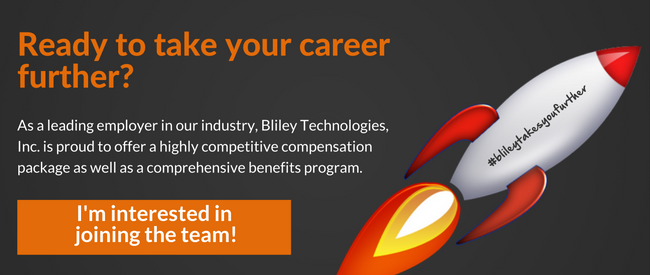
Topics: engineering , general

Subscribe... get an eBook!
- crystal oscillators (68)
- RF Technology (63)
- Space & Satellites (43)
- engineering (38)
- general (38)
- Defense & PNT (26)
- General Topics (26)
- Press Release (22)
- Clocks & Crystals (20)
- Military & Defense (17)
- aerospace (17)
- Leadership (16)
- Integrated RF (14)
- GPS & GNSS (9)
- Engineering Equiptment (7)
- Filters & Multiplexers (1)
See What's Popular
Most recent.

Disclosure: This blog contains product affiliate links to help support the blog. We only link trusted, well-rated products.
Epic content.
- Privacy Policy
- Distributors and Reps
© 2024 Bliley | Refund and Return Policy | Privacy Policy | Powered by Piconsulting
October 26, 2023
Can't find what you're looking for?
How to Deliver a Memorable Technical Presentation
Master the art of technical presentations, whether it's in your project meeting or an industry conference. Unleash your potential with these invaluable tips to ensure your presentation success.
What's Inside?
Tips to Ace Your Technical Presentation

Let’s say your company launched a SaaS application a few days ago. As head of the team, the onus is on you to spearhead the sales process. And the first step started with drafting a technical presentation explaining the product. Yes, you are a pro who knows all about the technical aspect, and you might be confident too.
But there are several questions you should ponder over
- Who will you be presenting to?
- How well is everyone aware of SaaS products?
- What should be your approach to drive sales and convince people of the product?
The answers to these questions will change the course of your presentation each time because the content will have to be modified accordingly.
Technical presentations are lengthy, specific, and involve complex information/ideas (often dreary and detailed), making them difficult to deliver over non-technical ones. And that’s why they require a different approach, which we have covered in this article.
How to Deliver a Winning Technical Presentation?
Here are some pro tips for creating impeccable slides and leaving your mark.
1. What is the core message and purpose of your presentation?
Structure your presentation around the key goal, which could be anything from sharing information and eliciting feedback to getting funding or a job offer, etc.
Organizing your presentation around a core theme will help your audience identify and follow the central points that support your content.
For instance, if your goal is to present a scientific result, include more information about what the result means and how it can be used rather than focusing on your methodology.
Or if your goal is to elicit response/feedback on some experiment, focus more on the methods, i.e., advantages, disadvantages of different models, your assumptions, how your model is more useful, etc.
Tell your audience what you want them to do. Why should they do it, and how?
2. Who is your audience?
Knowing your people (audience analysis) will help you stick to the right chord.
It will also help you know how much technical jargon you can rely on and whether images and analogies would suit the audience better.
Your audience might be diverse (investors, clients, customers, etc.) with different interests, knowledge bases, goals, and concerns. And, mind you, they are as central to your presentation as you are. So, know as much as you can about them and structure your presentation accordingly. Highlight how your message overlaps with what these people care about, and remember to include the diverse backgrounds and experiences in the introductory part. And you will have everyone’s attention right from the start.
3. Define a clear outline
You can divide the content into three sections for clear structure and easy comprehension. The first section gives an outline/summary of the main topic and illustrates why it was important enough to become the subject.
The second part can elaborate on the main subject with its minute technical details and everything that the audience needs to know.
The third section can highlight the resolution, solution, CTA, and course of action to the problem presented.
An effective presentation is not one where you detail every possible information about the topic or include as many issues as possible. It is when you can get people to build understanding and support for your central message.
4. Take help of everything that can explain the concept
For any presentation, words/text are not enough. And it becomes all the more imperative in a technical presentation slide.
According to a survey, people prefer 1/4th of the slide composed of text at most.
Since you will have to use jargon here and there, you can’t rely just on your speech. Use pre-designed PowerPoint templates comprising graphs, diagrams, animations, videos, infographics, etc., to help people understand technical concepts and information clearly. You can also use other experiential methods like prototypes, handmade models, or real-time experiments.
For a better understanding, go through this video showcasing paper prototyping of a mobile application :
5. Remember to be consistent
When your presentation slides differ in size, display, structure, etc., it can distract or confuse people and make them lose attention. Creating a consistent theme is important to help people focus and keep your presentation aligned.
Take the help of these tips to incorporate consistency in your work-
- Go for colors that complement each other, following the preferred color scheme.
- Choose fonts that are easy to read in a presentation or digital content like Serif or Sans-serif.
- Go for the same layout for a similar kind of content. Use one kind of layout for cover slides, one kind for section introduction, and one for content slides. It will help your audience categorize the content and know where to look for what information.
And, of course, don’t forget how immensely it will help you as a presenter.
And yes, keep your presentation short – not more than 10 slides. You can go for the 10/20/30 rule, i.e., 10 slides, 20 minutes, and 30 font size.
6. Leave space for questions and queries
Since your presentation is technical and the audience might be diverse, be prepared to answer questions. The major cause of anxiety before a presentation is a lack of preparation. Being thorough with the subject matter will also aid you in answering any questions being asked, apart from avoiding presentation jitters.
Allocate a well-designated time to interact with the audience. You can also do that during the course of the presentation if it doesn’t interfere with your speech. It will keep people engaged and alert as they get small windows to pose queries throughout.
7. Practice sessions
You might be confident about your content, but when you speak/deliver, your words and ideas might come out in a different way and not as you intend.
It could so happen that you are not too good with voice modulation or at specifying relevant points. That’s why it is imperative that you have multiple practice talks before delivering the presentation.
Keep your practice audience small and diverse so that you get relevant opinions and everyone has something to share.
You can share hard copies and remember to number your slides as well. It will help people annotate them and return them at the end. You can videotape yourself as well to see how you come across and improve accordingly.
8. A few quick tips
Keep in mind where you want to take your audience through the presentation. What perspective shift do you seek?
Do you want them to invest in the product? Or is it just an internal meeting highlighting the attributes of the product?
WIIFY is an acronym for What’s in It for You. Make sure you present it to your audience. For example, in the case of the SAAS application, your WIIFY to your potential investors would be - Investing in our product will get you an excellent ROI.
Let them know the USP of your proposition and the concept you are presenting. For example, you could highlight your USP as the one place for everything from website development to QA testing.
Use a short statement to capture everyone’s attention. It may be anecdotes, statistics, analogies, aphorisms, a question, etc.
For example, you could start with a statement like - Keep track of how many times I shall say ‘if’ when I explain the success of this product.
Or an analogy like - SAAS is like traveling by train where you have assigned routes and co-ride with other passengers.
Do’s and Dont's
- The presentation should start with the motivation, i.e., why this particular thing needs to be presented.
- Every presentation slide should contain only relevant information and not more than that.
- Titles should be enough on their own (self-explanatory); the rest of the text should be there to support the visuals, comprising relevant graphs, charts, histograms, etc.
- And most importantly, the audience properly understands the message the presenter desires to convey. Also, be mindful of overusing jargon.
In a Nutshell
Be thorough about the topic, learn about your audience, take the help of props and visual aids, and structure your presentation well. Don’t forget to interact with your audience as and when you get the chance. Also, make sure your audience knows what to do with the information you shared, i.e., give them a proper course of action.
Keeping these points in mind will help you create a coherent technical presentation that can serve its purpose.

Don't waste your time designing your presentations by yourself!
Type your content and let our platform design your presentations automatically. No more wasting time for your presentations. Use hundreds of presentation templates to impress your audience. This is the only tool you need to prepare presentations. Try our Presentation Builder today >>
Don’t waste your time by trying to make a website for all your content
Place your content links and let our platform design your bio link automatically. No more wasting time for your social content distribution. Use hundreds of presentation biolink to impress your audience. This is the only tool you need to prepare good-looking bio links. Try our Bio Link Builder today >>
Do You Want To Create a Presentation?
Latest Articles
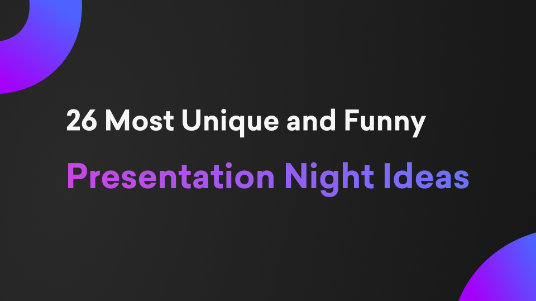
March 29, 2024
26 Most Unique and Funny PowerPoint Presentation Night Ideas
PowerPoint nights can be a hilarious and entertaining way to spend time with friends, colleagues, or beloved others. It's an opportunity to show your creativity and quirks, through your slides! Here are some of the best Powerpoint night ideas for parties.
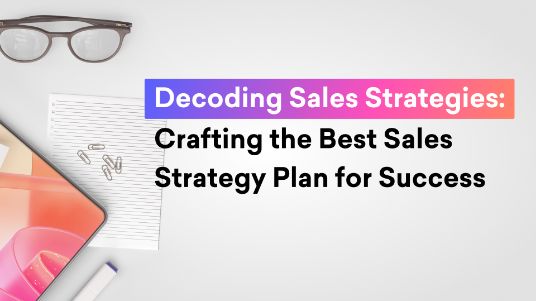
March 28, 2024
Decoding Sales Strategies: Crafting the Best Sales Strategy Plan for Success
Unlock the secrets of successful sales strategies to achieve your sales goals and close more deals with a well-crafted sales strategy. Learn how to create an effective sales strategy plan to maximize your sales potential.
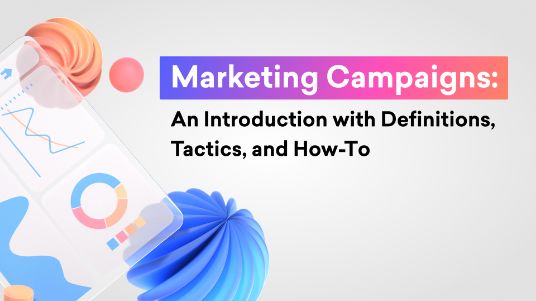
Marketing Campaigns: An Introduction with Definitions, Tactics, and How-To
Check out our in-depth guide on creating effective marketing campaigns. Learn how to improve your marketing game with these comprehensive templates, real-world examples, and successful tactics that work on a variety of platforms.
Sign up for our newsletter to stay up-to-date on the latest news and tips from Decktopus.
Let’s create a form here to get visitors’ email addresses.
Ready to dive in? Start your free trial today.
- SUGGESTED TOPICS
- The Magazine
- Newsletters
- Managing Yourself
- Managing Teams
- Work-life Balance
- The Big Idea
- Data & Visuals
- Reading Lists
- Case Selections
- HBR Learning
- Topic Feeds
- Account Settings
- Email Preferences
How to Give a Killer Presentation
- Chris Anderson

For more than 30 years, the TED conference series has presented enlightening talks that people enjoy watching. In this article, Anderson, TED’s curator, shares five keys to great presentations:
- Frame your story (figure out where to start and where to end).
- Plan your delivery (decide whether to memorize your speech word for word or develop bullet points and then rehearse it—over and over).
- Work on stage presence (but remember that your story matters more than how you stand or whether you’re visibly nervous).
- Plan the multimedia (whatever you do, don’t read from PowerPoint slides).
- Put it together (play to your strengths and be authentic).
According to Anderson, presentations rise or fall on the quality of the idea, the narrative, and the passion of the speaker. It’s about substance—not style. In fact, it’s fairly easy to “coach out” the problems in a talk, but there’s no way to “coach in” the basic story—the presenter has to have the raw material. So if your thinking is not there yet, he advises, decline that invitation to speak. Instead, keep working until you have an idea that’s worth sharing.
Lessons from TED
A little more than a year ago, on a trip to Nairobi, Kenya, some colleagues and I met a 12-year-old Masai boy named Richard Turere, who told us a fascinating story. His family raises livestock on the edge of a vast national park, and one of the biggest challenges is protecting the animals from lions—especially at night. Richard had noticed that placing lamps in a field didn’t deter lion attacks, but when he walked the field with a torch, the lions stayed away. From a young age, he’d been interested in electronics, teaching himself by, for example, taking apart his parents’ radio. He used that experience to devise a system of lights that would turn on and off in sequence—using solar panels, a car battery, and a motorcycle indicator box—and thereby create a sense of movement that he hoped would scare off the lions. He installed the lights, and the lions stopped attacking. Soon villages elsewhere in Kenya began installing Richard’s “lion lights.”
- CA Chris Anderson is the curator of TED.
Partner Center

Researched by Consultants from Top-Tier Management Companies

Powerpoint Templates
Icon Bundle
Kpi Dashboard
Professional
Business Plans
Swot Analysis
Gantt Chart
Business Proposal
Marketing Plan
Project Management
Business Case
Business Model
Cyber Security
Business PPT
Digital Marketing
Digital Transformation
Human Resources
Product Management
Artificial Intelligence
Company Profile
Acknowledgement PPT
PPT Presentation
Reports Brochures
One Page Pitch
Interview PPT
All Categories
Top 7 Technical Presentation Templates With Samples and Examples

Nidhi Aswal
Are you tired of struggling with technical presentations that lack impact and clarity? In today's fast-paced business world, effective communication is crucial. Did you know that presentations with visual aids are 43% more persuasive? Yet, crafting the perfect technical presentation can be time-consuming. That's where SlideTeam comes to the rescue, offering a game-changing solution.
We are introducing our Top 7 Technical Presentation Templates, which are meticulously designed for B2B audiences like yours. These templates are your secret weapon for quality assurance, technical indicators, expert team assembly, market landscape analysis, digital asset management, and course design.
In the first half of 2023, optimism about technology's potential to advance business and society has rekindled after a challenging 2022 for tech investments and talent. Envision having a reservoir of readily editable PPTs infused with real-world instances within your reach. SlideTeam empowers you to captivate your audience, make astute decisions, and conquer the competition.
Our templates are your route to technical excellence, ensuring you maintain a competitive edge. Ready to revolutionize your technical presentations for enhanced outcomes? Let’s get started.
Template 1: Role of Technical Skills in Digital Transformation
This all-encompassing PPT Preset covers a range of subjects, particularly emphasizing the significance of technical skills in driving digital transformation. It provides insights into IT professional challenges, roles and skills, pandemic impacts, and upskilling requirements for primary IT roles, including data and analytics, cybersecurity, application architecture, infrastructure operations, and cloud expertise. Download this presentation to see how IT drives growth and innovation by improving internal relationships and influencing strategy.

Download now!
Template 2: Technical Feasibility PowerPoint Presentation Slides
This comprehensive PPT Deck comprises 41 expertly crafted slides covering a spectrum of essential topics. It facilitates project assessment, product and service delivery planning, and business idea viability evaluation. Delve into your venture's strengths, weaknesses, opportunities, and threats, considering resource requirements, tax, legal, and technical expertise. Elevate your project discussions by downloading these Technical Feasibility PowerPoint Presentation slides.

Template 3: Technical and Nontechnical Training Proposal PowerPoint Presentation Slides
This complete PPT set spans various crucial topics, emphasizing the significance of technical and non-technical skills in workforce efficiency. This PPT infographic highlights the need for comprehensive training programs to enhance employee capabilities. Our Technical and Non-Technical Training Proposal PowerPoint Presentation is perfect for elucidating how these skills boost overall business productivity. This slide collection aids in presenting project objectives, goals, action plans, and task timelines and showcasing your company's mission, vision, core values, and client testimonials.
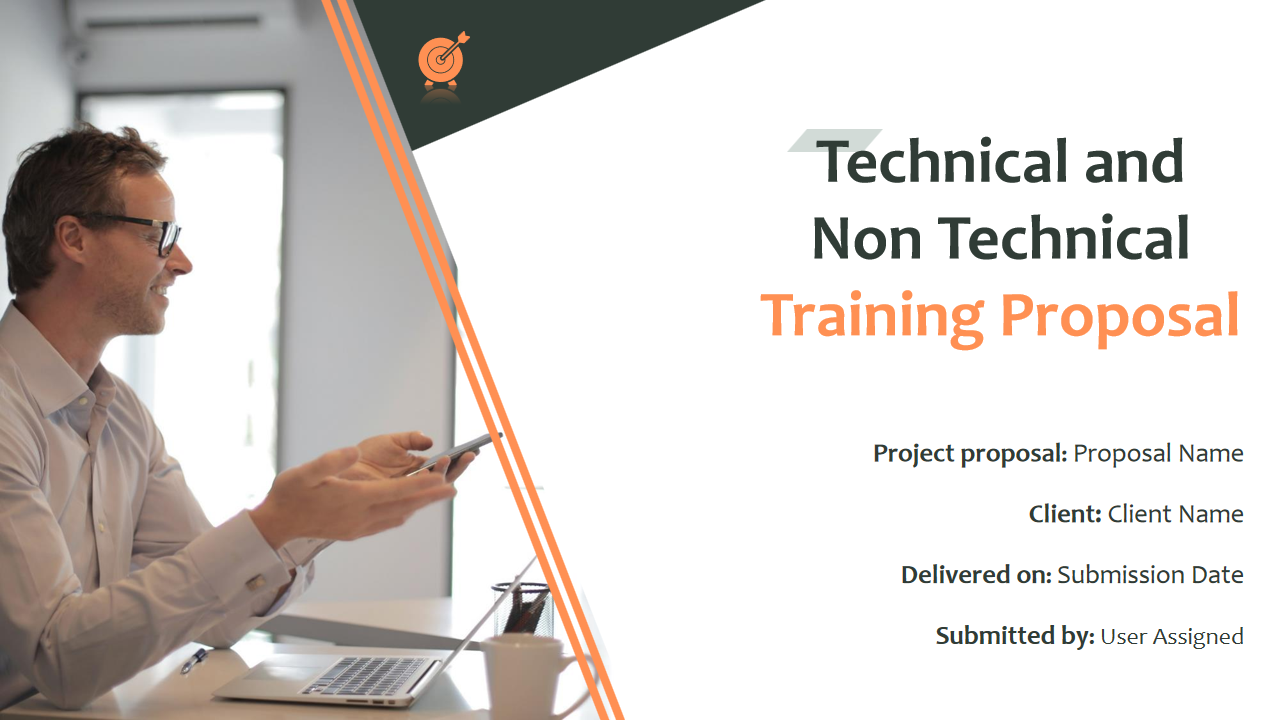
Template 4: Technical Maintenance Service Proposal PPT Presentation
Introducing our PPT Template for technical maintenance service proposal, expertly crafted to meet all your engineering maintenance requirements. This comprehensive PPT Deck offering covers preventive maintenance, emergency repairs, system upgrades, and consulting services to enhance the efficiency and longevity of your engineering systems. It is carefully designed by our dedicated team of experts committed to excellence. Get this PPT Template now and elevate your engineering maintenance.

Template 5: Technical Analysis for Target Market PowerPoint Presentation Slides
Upgrade your business strategies with our technical analysis for target market PowerPoint Presentation slides. These slides comprehensively show market trends, segmentation, product comparisons, and more. Visualize data with pie charts and graphs, and make informed decisions. It includes 17 fully editable slides, making it a valuable asset for your business growth.

Template 6: Technical Design PowerPoint Presentation Templates
Unlock accolades with our technical design PowerPoint Templates. This versatile PPT Deck covers quality assurance, technical indicators, visual design, product delivery, and product strategy in five engaging slides. Elevate your presentations with our fully editable PPT Preset and earn recognition for your expertise.
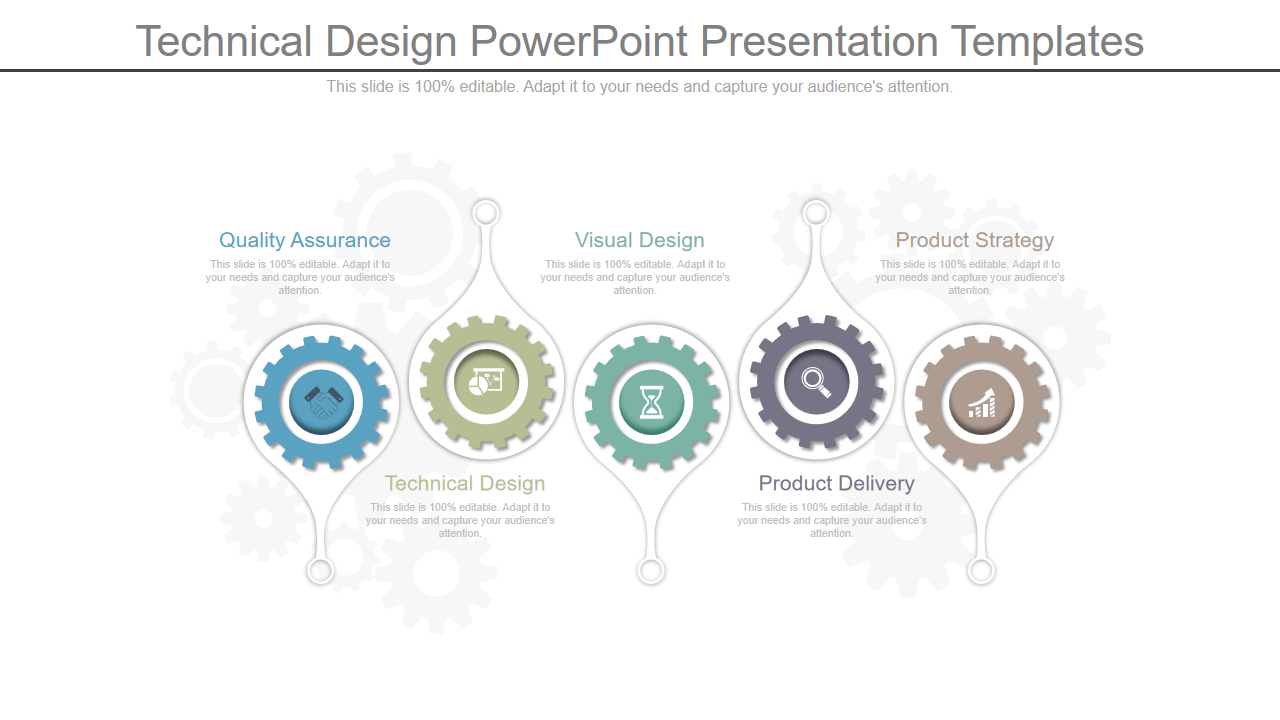
Template 7: Technical Analysis Types Result Areas PPT Designs
With this PPT Theme, navigate through the stages, including chart patterns, technical indicators, business, management, and marketing. This fully content-ready PPT Preset is your solution to addressing adversity and making a lasting impression on your audience.
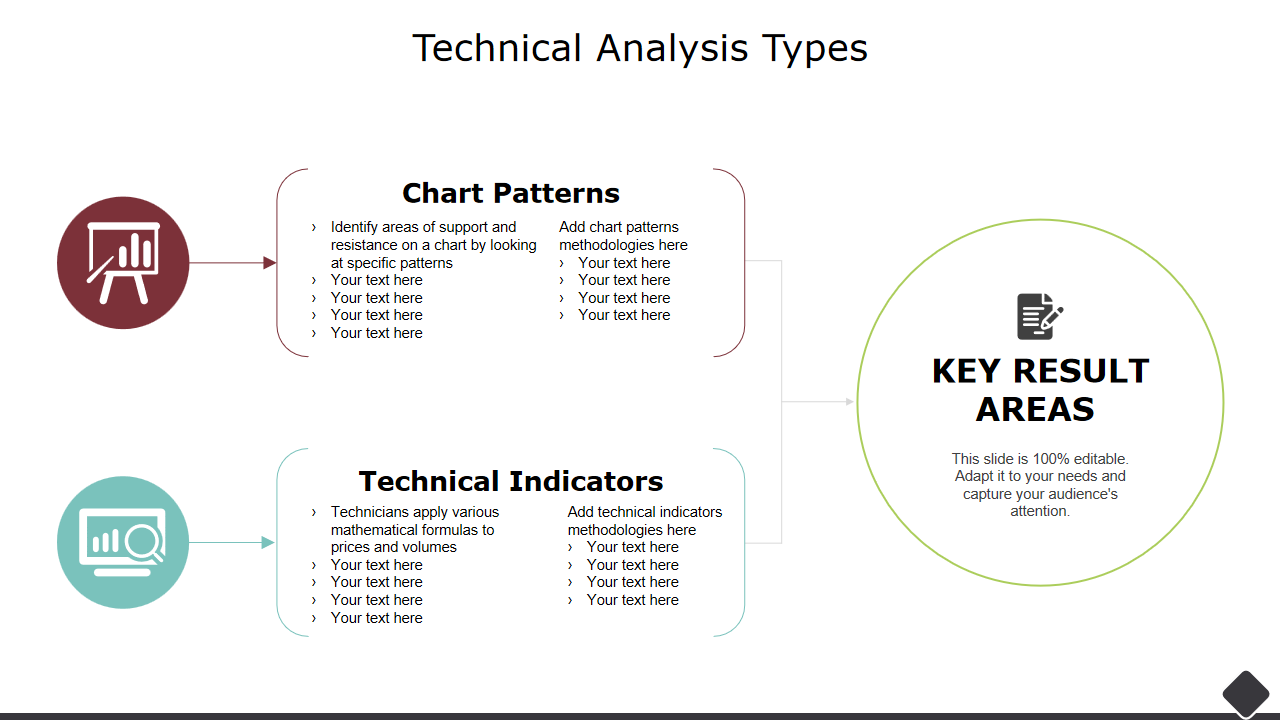
Template 8: Conduct Technical Assessment and Audits Strategy PPT Layouts
Our PPT Deck on how to perform technical assessments and audits will cut down on pointless chit-chat. This three-stage PPT Slides encompasses business, management, planning, strategy, and marketing. To quickly and effectively counter objections and impact your audience, download this content-ready infographic immediately.
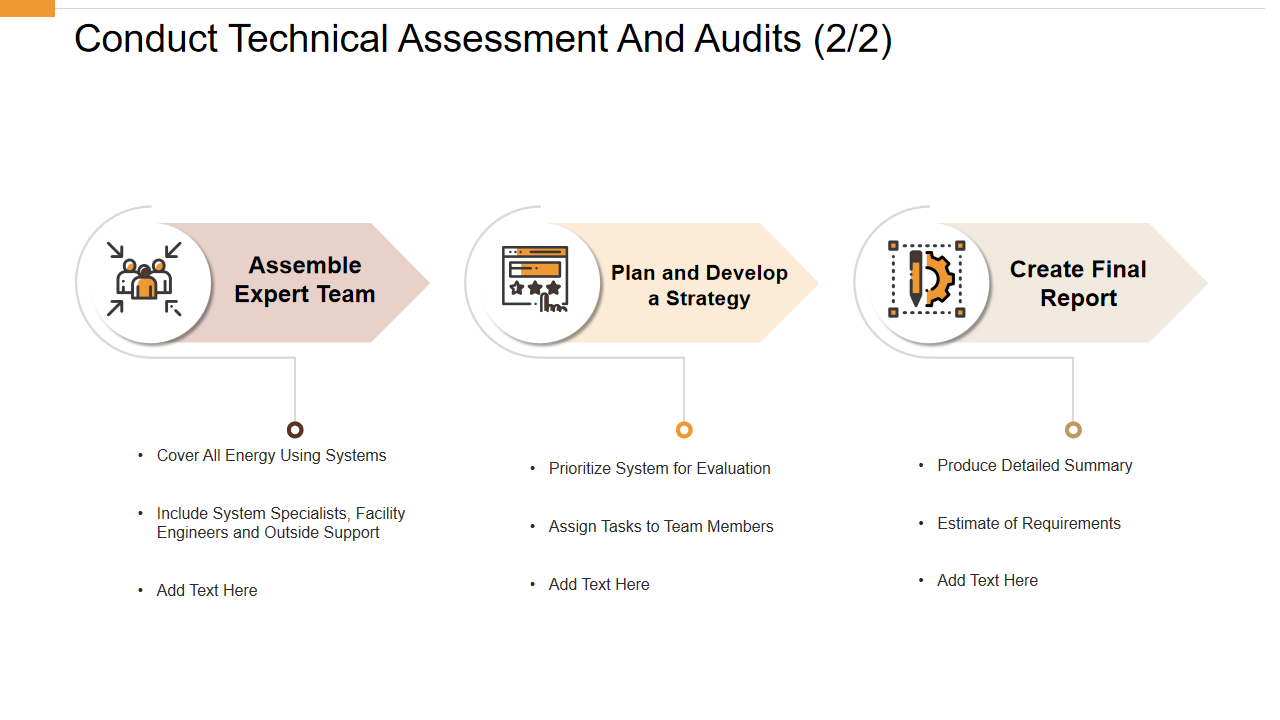
Tech Presentation Excellence
The technical presentation templates on SlideTeam provide a quick and easy way to convey your ideas and help your audience make educated choices. These aesthetically beautiful and adaptable decks cover many issues vital to today's businesses, from market research to technological design. Our customizable templates will help you wow your audience and stand out. Download these top 7 technical templates now and improve your technical prowess.
Ready to overcome innovation challenges? Explore our top 10 technical strategy templates designed to empower your innovation journey. Dive into the next level of success!
Looking for top-notch technical report templates? Click here to access our collection of the Top 5 templates to elevate your technical reporting game.
Are you geared up to wow audiences with your product pitches? Click here to discover our must-have product presentation templates and captivate your audience effortlessly. Your next successful pitch is just a click away!
FAQs on Technical Presentation Template
What should a technical presentation include.
A technical presentation should include several key elements for clarity and engagement. It should start with a clear introduction outlining the topic's importance. Then, present technical content logically with clear explanations, visuals, and examples. Address potential questions or concerns. Summarize the key points, and end with a concise conclusion. Visual aids, diagrams, and data should be used effectively to enhance understanding. Audience interaction, where appropriate, can also improve engagement.
What is most important in technical presentation?
In a technical presentation, effective communication and clarity are of highest significance. It is crucial that highly technical material be presented in a way that is easily understood. Also essential are eye-catching graphics, well-organized text, and an understandable progression of events. A technical presentation may be improved by interacting with the audience, fielding their questions, and using real-world examples to drive home your arguments.
How do you make a technical presentation interesting?
To add interest to a technical presentation, commence with an engaging introduction emphasizing the topic's significance. Utilize relatable examples and narratives to illustrate intricate concepts. Include visually attractive graphics and diagrams on your transparencies. Maintain a dynamic tempo and refrain from overpowering the audience with technical jargon. Engage the audience through questions, discussions, and real-world applications. Conclude with a memorable summary and encourage questions, fostering an interactive and engaging atmosphere.
Related posts:
- Top 10 Technology Assessment Templates to Evaluate New Technologies
- How Generative AI Tools are Transforming Different Industries – With Free PPT and PDF
- [Updated 2023] Top 20 Artificial Intelligence PowerPoint Templates and Google Slides For Technology Geeks
- Top 20 Technology Templates for Techies to Excel
Liked this blog? Please recommend us

Top 10 Data Governance Plan Templates with Examples and Samples

Must-Have Employee Contract Templates With Examples And Samples
This form is protected by reCAPTCHA - the Google Privacy Policy and Terms of Service apply.

Digital revolution powerpoint presentation slides

Sales funnel results presentation layouts
3d men joinning circular jigsaw puzzles ppt graphics icons

Business Strategic Planning Template For Organizations Powerpoint Presentation Slides

Future plan powerpoint template slide

Project Management Team Powerpoint Presentation Slides

Brand marketing powerpoint presentation slides

Launching a new service powerpoint presentation with slides go to market

Agenda powerpoint slide show

Four key metrics donut chart with percentage

Engineering and technology ppt inspiration example introduction continuous process improvement

Meet our team representing in circular format

- Tech Deals at Target Right Now!
- The Electric Grill You Need This Year
10 Dos and Don'ts for Technical Presentations
Designing a technical PowerPoint presentation
- Brock University
Yuri_Arcurs / Getty Images
When using PowerPoint or other presentation software for a technical presentation, your primary concerns should be:
- How technical should this presentation be?
- Can I make this information clear and concise?
A technical presentation is the most difficult type of presentation to make. Your audience may include highly skilled individuals as well as those who are not as familiar with the concepts or terminology. You will need to address both learning styles. Audience analysis is an important skill in itself and should be one of the first items on your presentation checklist.
- Keep the fonts consistent in both style and size throughout the whole presentation.
- Use common fonts that are available on every computer , such as Arial, Times New Roman, or Calibri. This way, there will not be any surprises if the computer used for the presentation does not have the unusual font you chose installed, and therefore substitutes another font.
- Include relevant photos and graphics such as simple charts or diagrams. Consider whether the audience can understand the information presented or if you need to simplify the chart/diagram for clarity.
- Make sure that graphics are of good quality so the information is easily deciphered at the back of the room.
- Make labels on charts large enough to be read at a distance.
- Use heightened contrast on your slides. Consider creating the same presentation in two formats — one presentation with dark text on a light background, and a second, duplicate presentation using light text on a dark background. This way, you are ready for either a very dark room or very bright room to present in and can choose the suitable presentation accordingly.
- Keep the number of slides to a minimum. Present only what is necessary and don't overwhelm the audience with too much information. Technical information is hard enough to digest.
- Allow time for a question period at the end of your presentation.
- Know everything about your topic so that you are prepared for any question that arises, even if the question was not covered in the material you presented.
- Have detailed handouts ready to give out after the presentation. This allows the audience to later reflect on the presentation and the information is ready at hand for any necessary follow-up.
The Don'ts
- Don't confuse the audience with disorganized slides so that the purpose of the presentation is not crystal clear.
- Don't overwhelm your audience with busy slides. Think of that old cliché — "less is more."
- Don't use small images or small text on your slides. Think about those people at the back of the room.
- Don't use script type fonts. They are notoriously difficult to read at the best of times, let alone on a screen.
- Don't use more than three or four related points on each slide.
- Don't use a fancy background . It may be pretty or even on topic, but the text will be difficult to read. Keep to a subtle backdrop for the information.
- Don't add pictures for the sake of decoration. Make sure there is a point to be made and that information is obvious to the viewer.
- Don't use sounds or animations unless they are to emphasize a point. Even then, it is risky as they can detract from the main focus of the presentation.
- Don't use acronyms unless all members of the audience are familiar with them.
- Don't include more than four or five items on a chart. Even though Excel charts can be made to show great detail, a slideshow is not the place for this information. Stick to important facts only.
Get the Latest Tech News Delivered Every Day
- The 10 Most Common Presentation Mistakes
- Change Font Colors and Styles on PowerPoint Slides
- 9 PowerPoint Presentation Tips for Students
- Beyond the Basics in PowerPoint
- 4 Parts of a Successful Presentation
- 10 Tips on Becoming a Better Presenter
- How to Lose an Audience and 10 Ways to Get Them Back
- 12 Tips for Delivering a Knockout Business Presentation
- What Is Microsoft PowerPoint and How Do I Use It?
- The 8 Best Google Drive Add-ons for 2024
- An Introduction to PowerPoint
- How to Apply Security in PowerPoint Presentations
- What Is an Animation in Presentation Software?
- PowerPoint Master Slide
- The Definition of a Slide (or Slides) in a PowerPoint Presentation
- How to Use Google Slide Animations and Transitions
- How to Plan a Technical Presentation
Technical experts – scientists, engineers, and programmers – are being asked more and more frequently to give presentations. And not just to other technical experts. Often they are speaking to people with little or no technical expertise, to people from marketing, sales, and finance.
Here’s how to plan a technical presentation so it is clear and convincing.
1. Limit your Subject If you’re like most technical experts, you probably spend too much time doing research. Then, because you haven’t allowed yourself enough time to pull it all together, you end up cramming everything you know about your subject into your presentation. You produce many more slides than you can possibly do justice to in the allotted time.
With most presentations, you won’t have the time you need to say everything you want to say. So you have to prioritize. It’s your job to know what to say and, just as importantly, what not to say.
While non-technical speakers are often “light” on content, technical presenters more commonly present — or try to present — too much material.
2. Understand your Audience Knowing who you’re talking to – your audience – is as important as knowing what you’re talking about – your subject. Your audience’s knowledge level, experience, learning style, and attitudes will – or should – affect how you shape and present your material.
Find the answers to these questions:
- What does you audience already know about your subject?
- Are they experts like yourself or neophytes?
- How much knowledge can you take for granted?
- How much background will you have to explain?
- Will they understand basic jargon?
- What is their learning style?
- Are they accustomed to sitting through lectures and holding their questions to the end? Or will they expect to interact with you, asking questions throughout your presentation?
- Do they like lots of PowerPoint™ slides and handouts? Or are they expecting you to be more interactive?
- What are their opinions, prejudices, preconceived notions, agendas?
- What is their stake in the subject?
- How will your presentation affect their research or work?
3. Determine your Objective What do you want to accomplish? What do you want your audience to do as a result of your presentation?
Do you want them to
- Challenge your assumptions or data or to confirm them?
- Implement your procedure or technique?
- Renew your grant?
- Approve your proposal?
- Give you the go ahead for the next step of your research?
Once you know what you want them to do, ask yourself what they need to know and to feel in order to do it.
4. Prepare your Outline If possible, break your presentation into three basic sections. (You can divide each section into more, smaller units.)
Here are some 3-section outlines you might find helpful:
- The problem, its causes, and the solution.
- The illness, the symptoms, and the treatment
- The current situation or standard operating procedure, the problems associated with it, and an alternative
- The state of your research, questions raised by your research, and the next steps
- A product, its composition, and its application
Once you’ve “clumped” the various elements of your talk into their major sections – I strongly recommend three sections, but you could have as many as five – add an introduction and conclusion.
5. Create your Slides Now you can turn on PowerPoint™ and begin creating your slides.
See also 10 Tips for Using Visual Aids and How to Improve a Technical Presentation .
Chris Witt, a coach based in San Diego, works with technical experts who want to give more effective presentations. If you’re interested in learning more about how you could benefit from his coaching, contact him for a complimentary call.
10 TIPS TO MAKE YOU A BETTER SPEAKER NOW
- How Leaders Speak
- How to Plan an Oral Proposal
- Take the Listening Quiz
- How to Handle the Q&A Session
- 10 Tips for Using Visual Aids
- How to Develop Confidence in Public Speaking
- Build Rapport with Any Audience
- 7 Principles of Influence
- What to Do When Your Mind Goes Blank
Speaking your way to success
Have you ever been bored by a PowerPoint presentation? Of course you have. The real question is, why can't more people speak in a way that has the power to change the way people think and feel and act?

IMAGES
VIDEO
COMMENTS
First of all, don't use dark backgrounds. Light-colored backgrounds are easy on the eyes. Second, adjust your font styles and sizes to make sure they're big enough. And finally, learn to zoom in on specific areas as required, depending on whether you're using a Windows PC or a Mac system.
Structure your presentation. To craft an effective technical presentation, it is crucial to structure your content in a clear and logical flow. Begin with an attention-grabbing introduction that captivates your audience and sets the tone for the presentation. Organize your content into sections or chapters, making it easier for your audience to ...
Use color, callouts (e.g., arrows or speech bubbles), or other mechanisms to draw attention to the most important parts of your slides or graphs. For example, suppose you have a list of 3-5 bullet points, each one line of text long. You might want to emphasize the 1-3 most important words in each bullet point. Color.
By doing so, you will be more . . . Engaging. By directing your presentation to the audience's needs, you'll increase attention and retention. Efficient. By creating an audience-centric presentation from the start, you'll find it easier to plan and deliver a relevant and memorable talk. Effective.
Criteria for Success. The presentation starts with the motivating problem for the research and why it's being presented. Every slide shows something relevant to the motivating problem. Every slide shows no more information than necessary to convey the message. Slide titles stand on their own; other text supports the visuals.
Another way to make a technical topic easy to digest is to keep your presentation brief. One trick is to create an outline to distill your message into 3-5 key points. Another is to use Guy Kowasaki's 10/20/20 rule (10 slides, 20 minutes, and a minimum of 30 font) to force yourself to be concise.
Chapter 16: Technical Presentations. Figure 16.1: It can be scary looking at a large audience, even for us who do it a lot. One important, but often overlooked, skill in engineering is presenting. From talking with students, I have noticed that a lot of engineering students are intimidated by public speaking. In fact, I have almost a decade of ...
Gambit: Include a short statement to grab your audience's attention. The five classic opening gambits are: The question: A question directed at the members of the audience. The factoid: A ...
Anticipate and prepare for responses; All of these points are interconnected and interdependent — a successful presentation will incorporate all three, allowing the audience to comprehend your key message, take away information relevant to them, and have their queries and concerns answered in a satisfactory manner.
However, if you are someone who values continuous improvement - and I am - you need to do the uncomfortable. Here's my five-years-later Updated Tips for a Successful Technical Presentation. 1. Have a Reset Strategy (One-Click) If you're going to give a talk, you'll probably have to give it more than once.
Determine beforehand how technical your presentation needs to be in order to get the point across. Only go as deeply into the subject as required, and avoid throwing in terms and references which have nothing to do with the subject at hand. 3. Make an Outline. Now it's time to break down the presentation into smaller chunks that focus on one ...
And yes, keep your presentation short - not more than 10 slides. You can go for the 10/20/30 rule, i.e., 10 slides, 20 minutes, and 30 font size. 6. Leave space for questions and queries. Since your presentation is technical and the audience might be diverse, be prepared to answer questions. The major cause of anxiety before a presentation is ...
Here are a few tips for business professionals who want to move from being good speakers to great ones: be concise (the fewer words, the better); never use bullet points (photos and images paired ...
Frame your story (figure out where to start and where to end). Plan your delivery (decide whether to memorize your speech word for word or develop bullet points and then rehearse it—over and ...
Learn how to prepare and present your technical topic in a clear, engaging, and memorable way. Follow these tips to avoid confusing or boring your audience.
Template 3: Technical and Nontechnical Training Proposal PowerPoint Presentation Slides. This complete PPT set spans various crucial topics, emphasizing the significance of technical and non-technical skills in workforce efficiency. This PPT infographic highlights the need for comprehensive training programs to enhance employee capabilities.
Presentation skills are the abilities and qualities necessary for creating and delivering a compelling presentation that effectively communicates information and ideas. They encompass what you say, how you structure it, and the materials you include to support what you say, such as slides, videos, or images. You'll make presentations at various ...
3 Use visuals and stories. Another way to make your technical presentations understandable is to use visuals and stories to support your message. Visuals can help you show rather than tell, and ...
So make sure that you are 100% sure that people can see what is going on. My recommendation is, please set your screen resolution to whatever the projector supports. Most of the time, this will be Full HD 1080p (1920×1080) resolution. Presentation Demo Screen Resolution and Scaling.
The Don'ts. Don't confuse the audience with disorganized slides so that the purpose of the presentation is not crystal clear. Don't overwhelm your audience with busy slides. Think of that old cliché — "less is more." Don't use small images or small text on your slides. Think about those people at the back of the room.
And not just to other technical experts. Often they are speaking to people with little or no technical expertise, to people from marketing, sales, and finance. Here's how to plan a technical presentation so it is clear and convincing. 1. Limit your Subject If you're like most technical experts, you probably spend too much time doing research.
Before the Presentation. When it comes to public speaking, The first step comes in choosing a topic. Topics for presentations are usually determined by occasion, the audience, and the qualifications of the speakers. When selecting a topic, you should keep in mind the special expertise you may have acquired that would make for an interesting ...
To access the translated content: 1. The translated content of this course is available in regional languages. For details please visit https://nptel.ac.in/t...
Trick to make your Technical Presentations StickIf you create training or informational presentations you will find the ideas in this PowerPoint video useful...